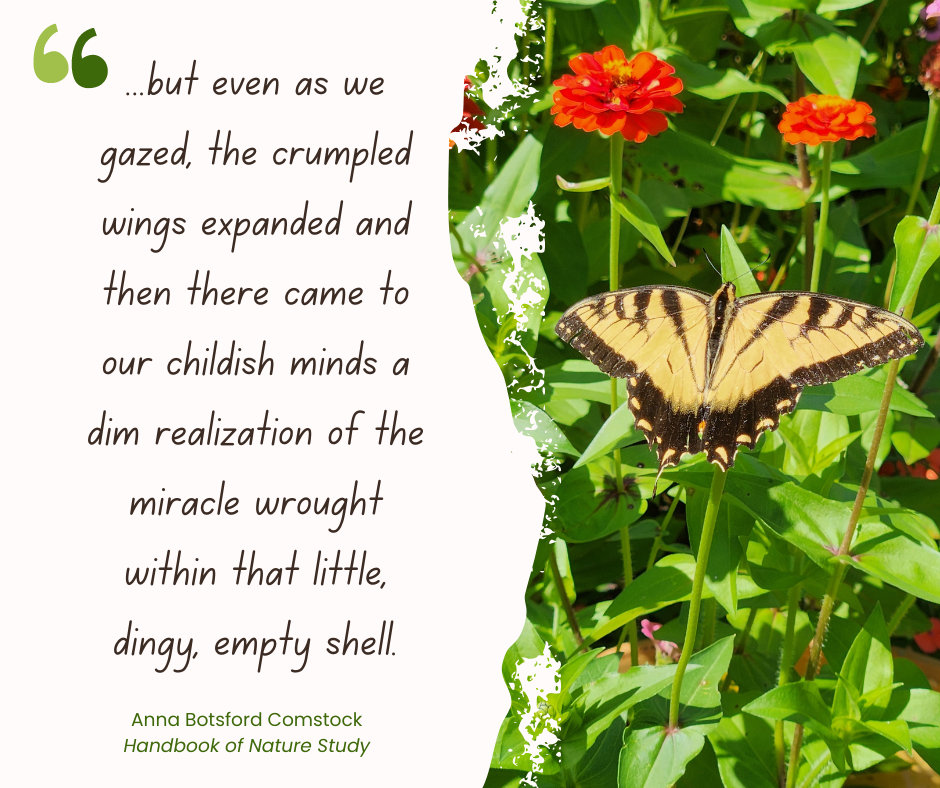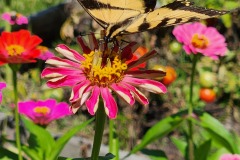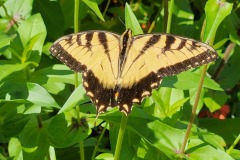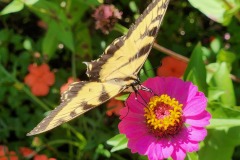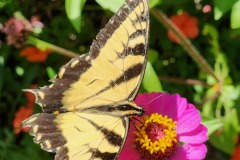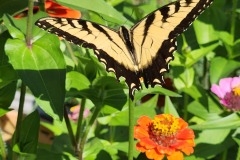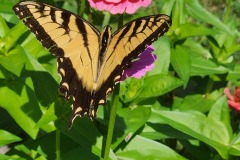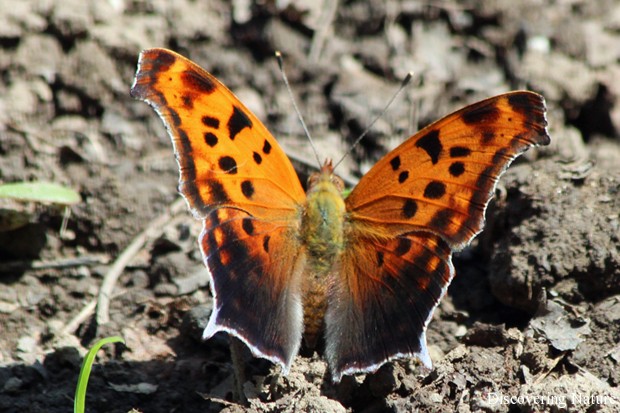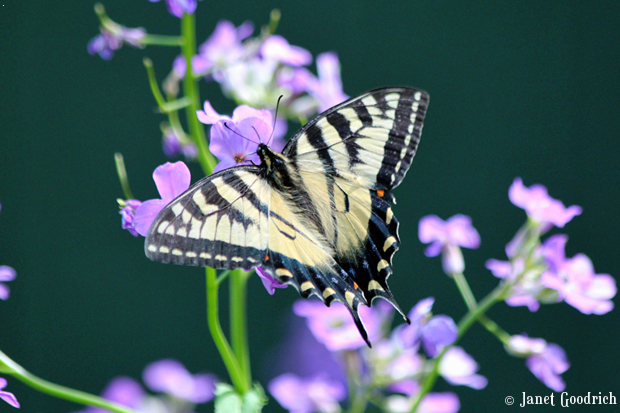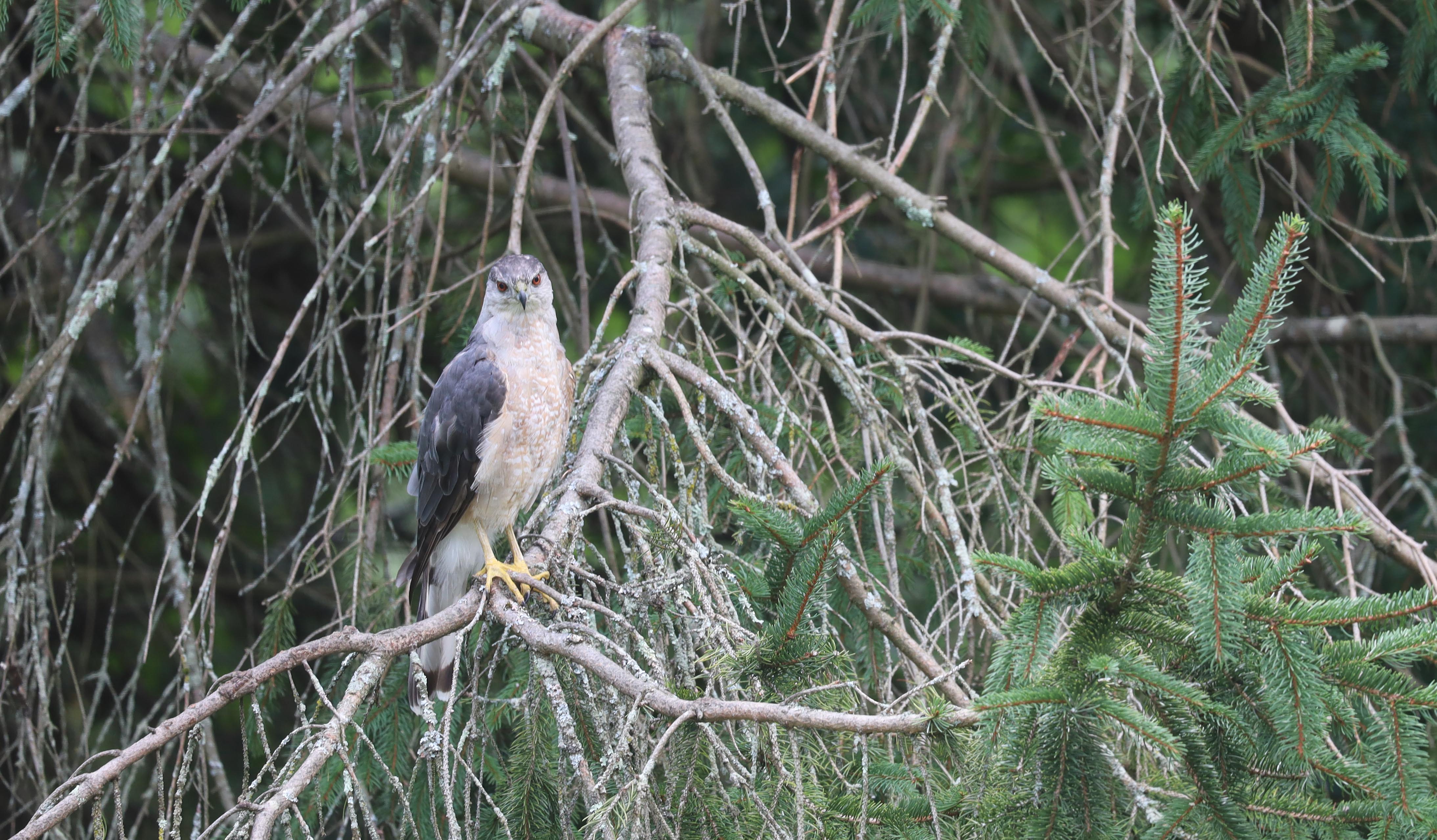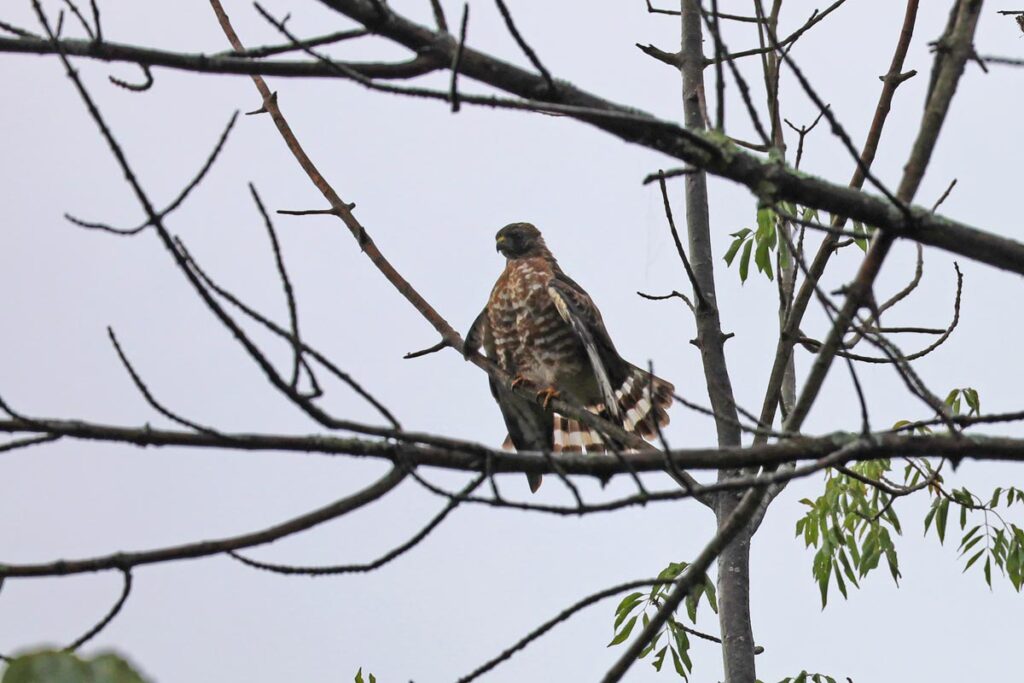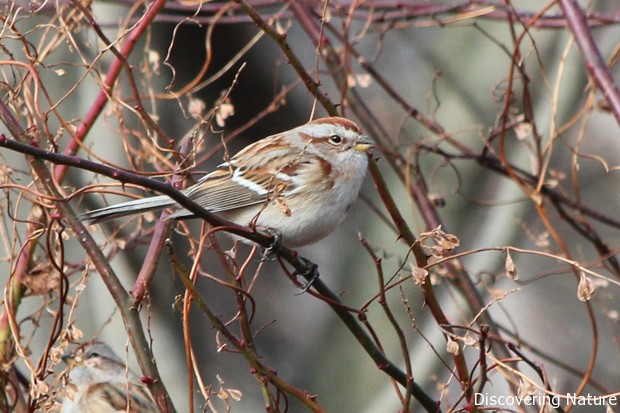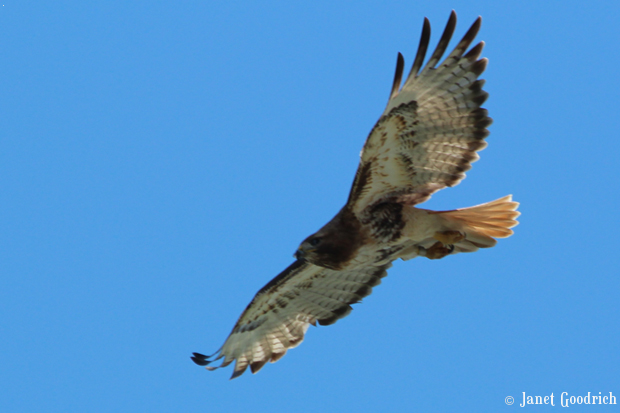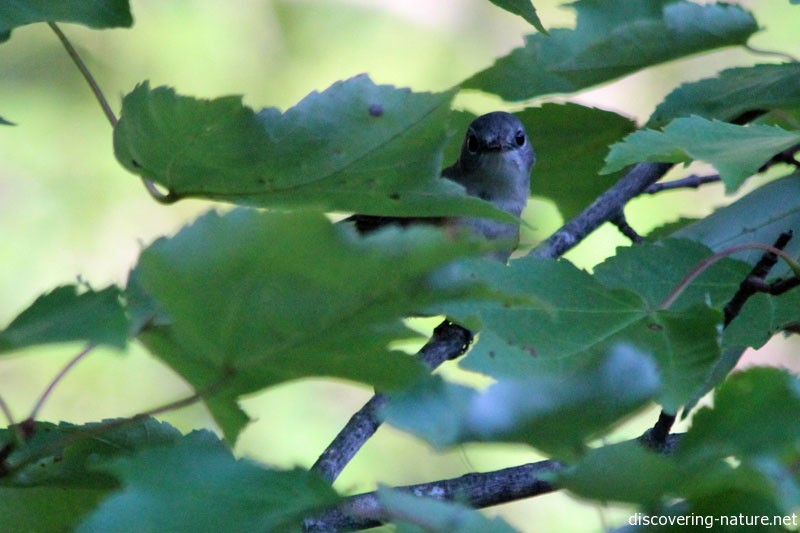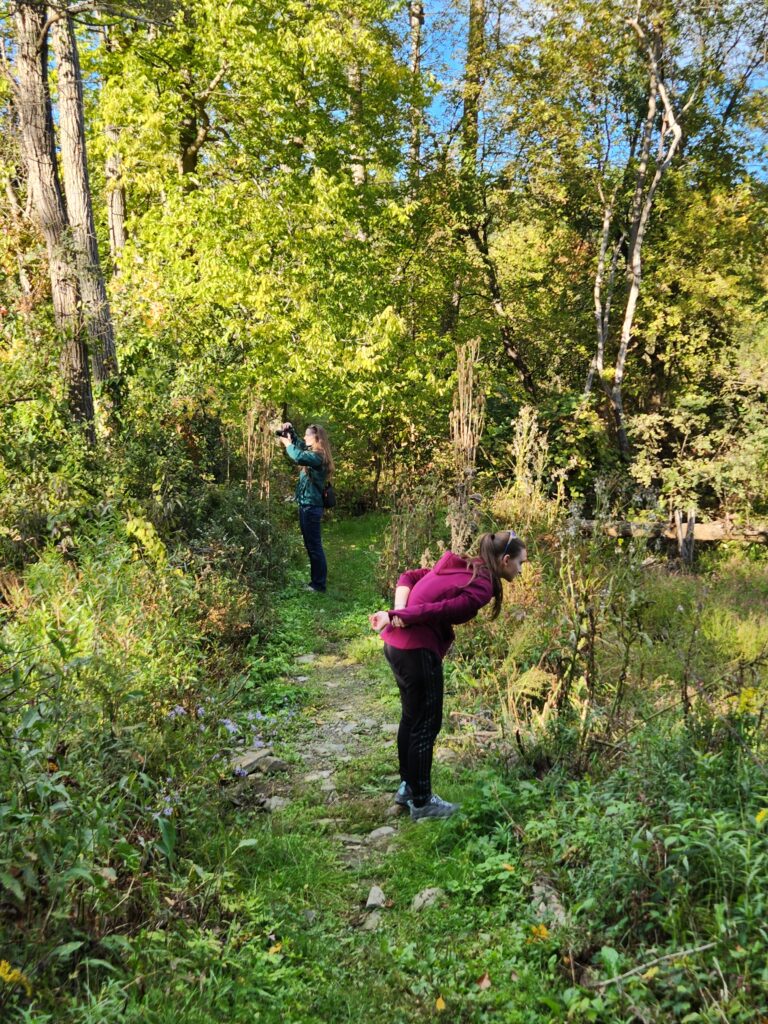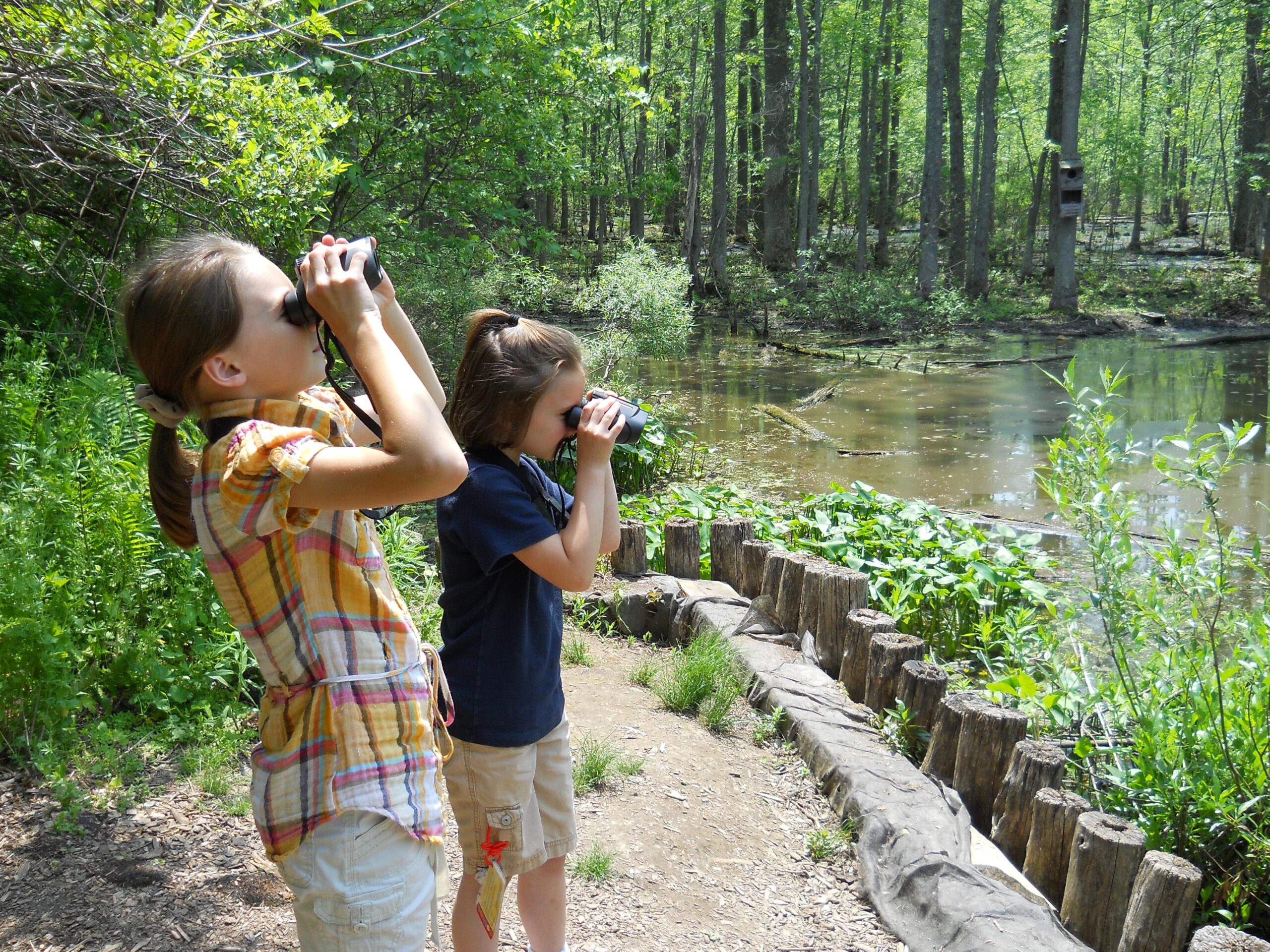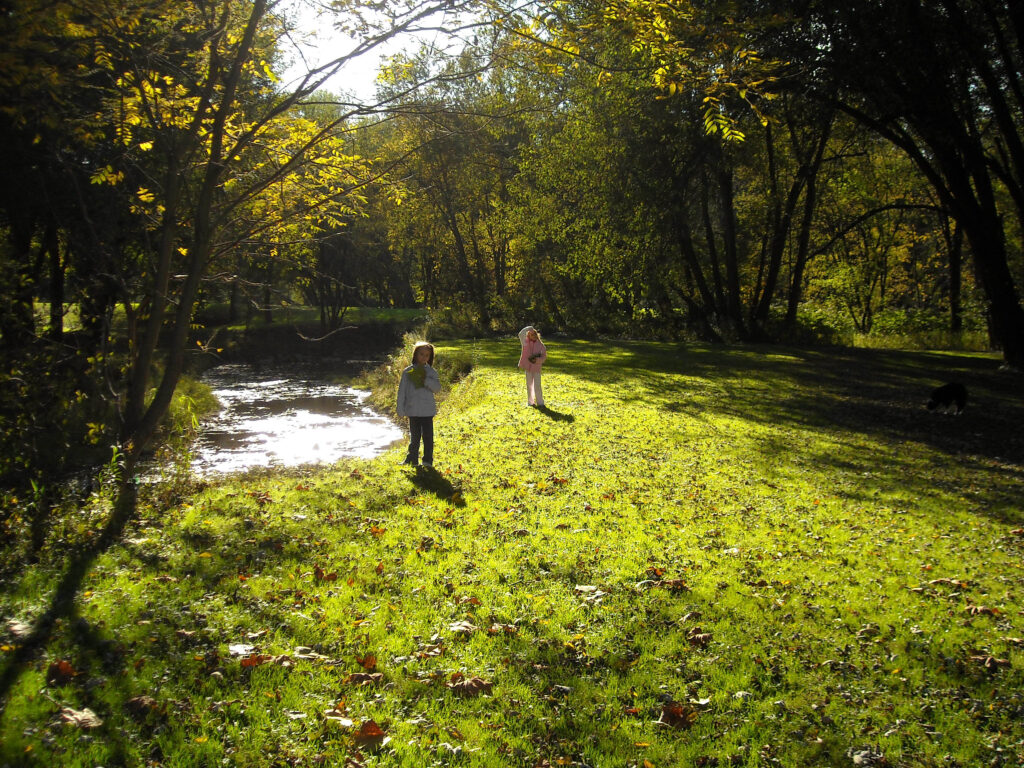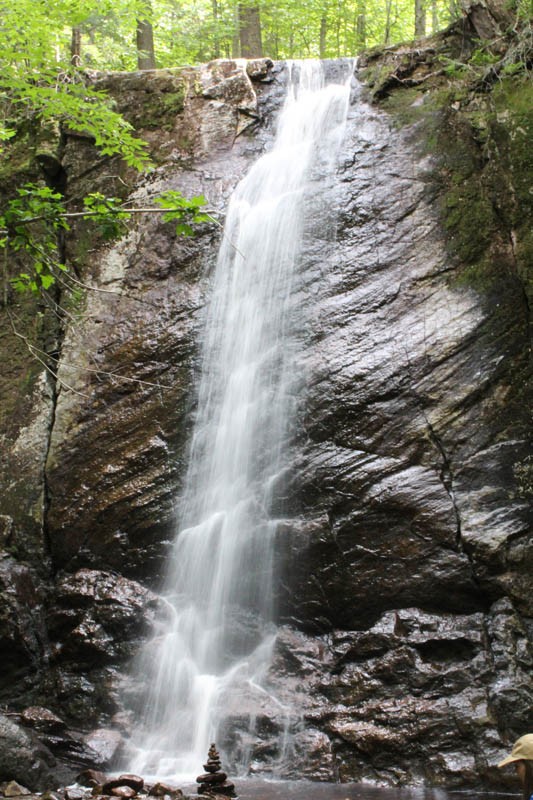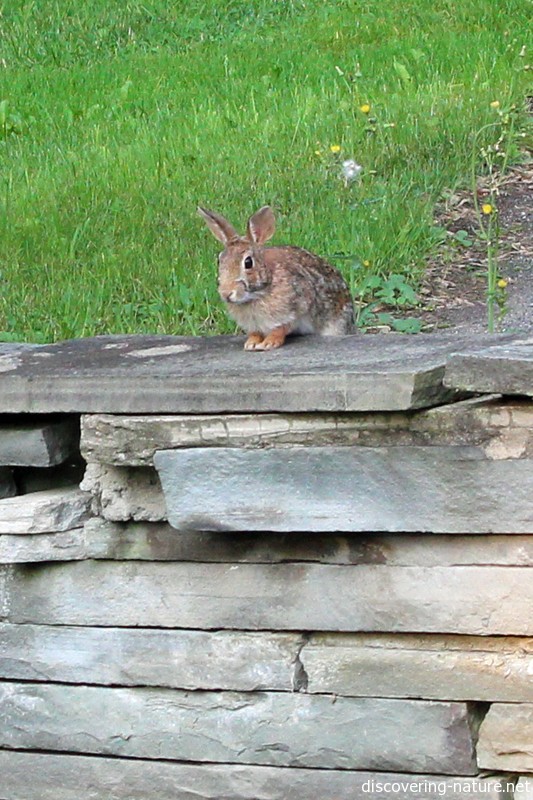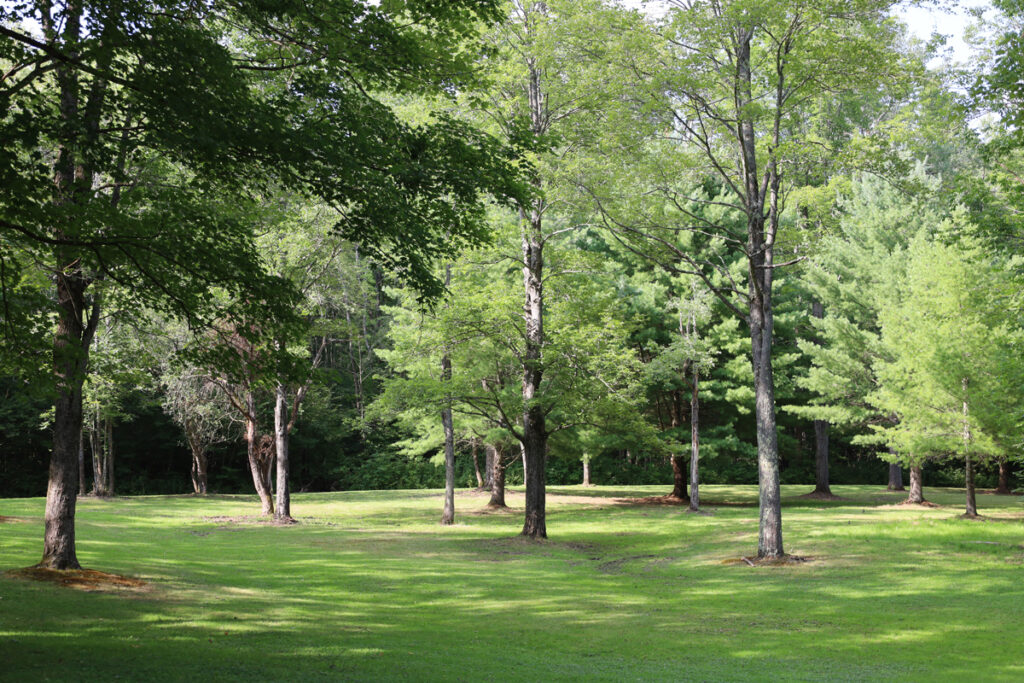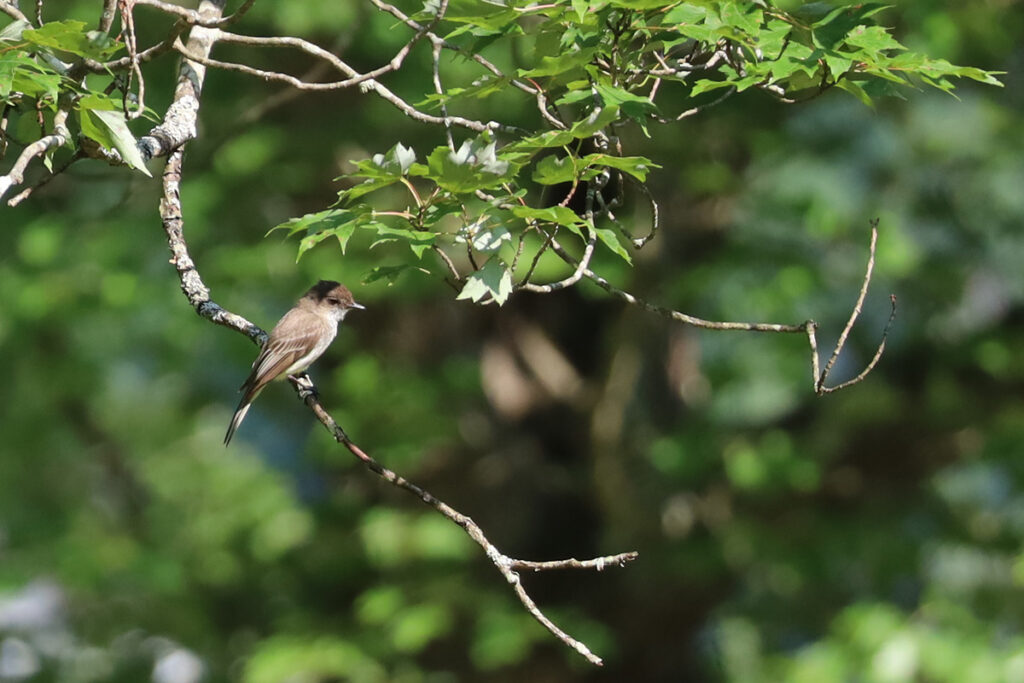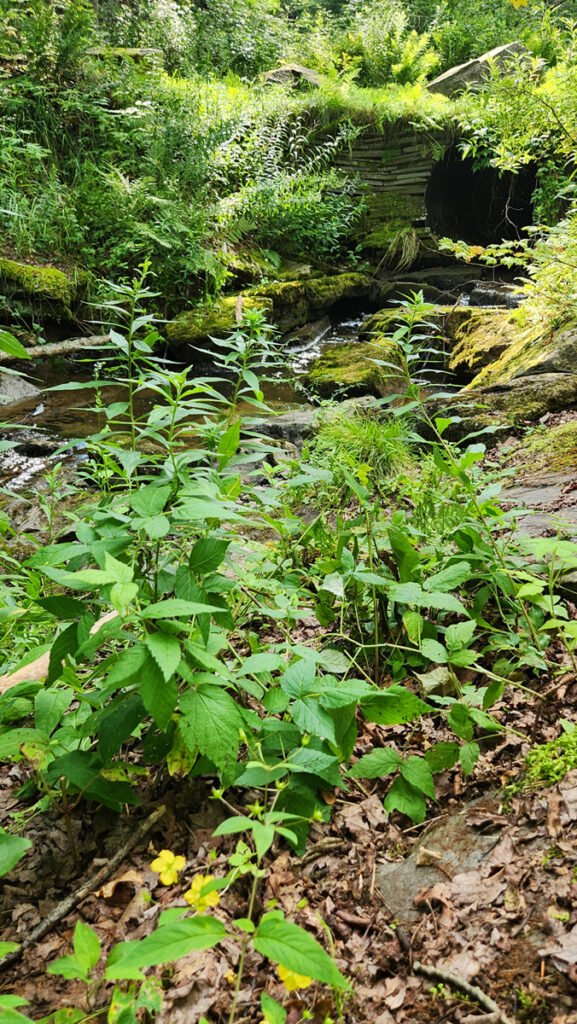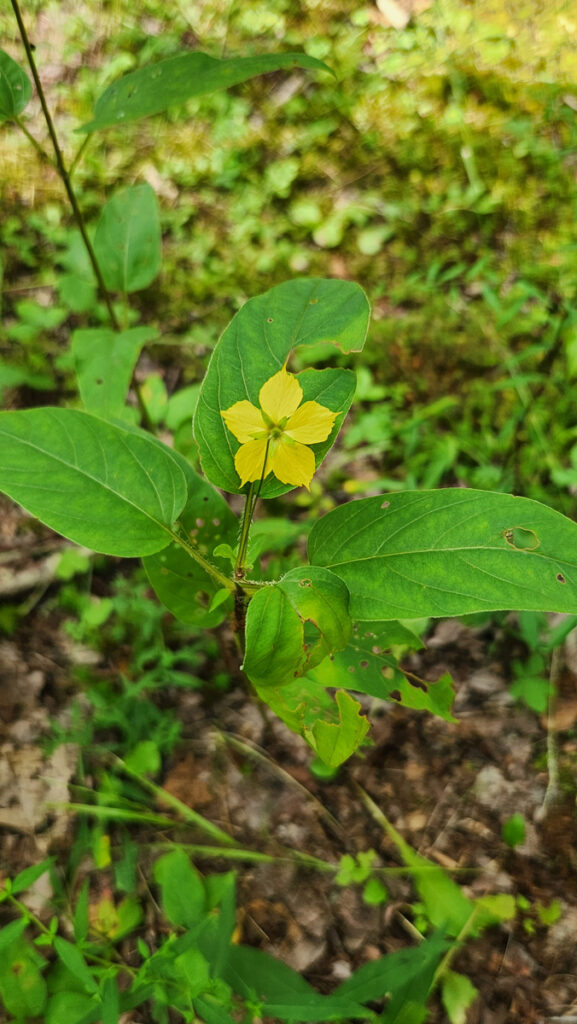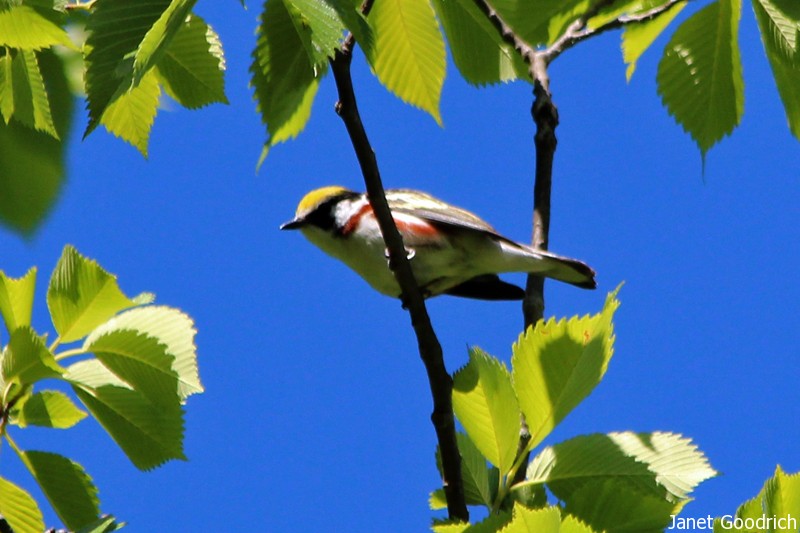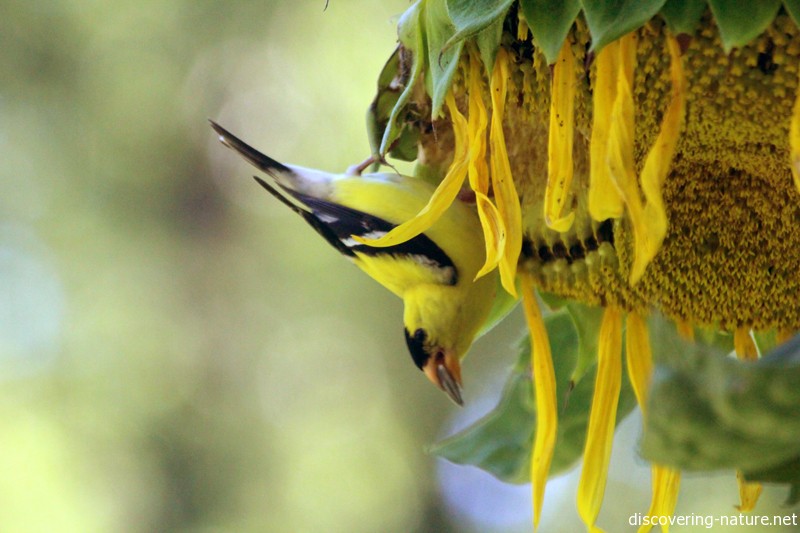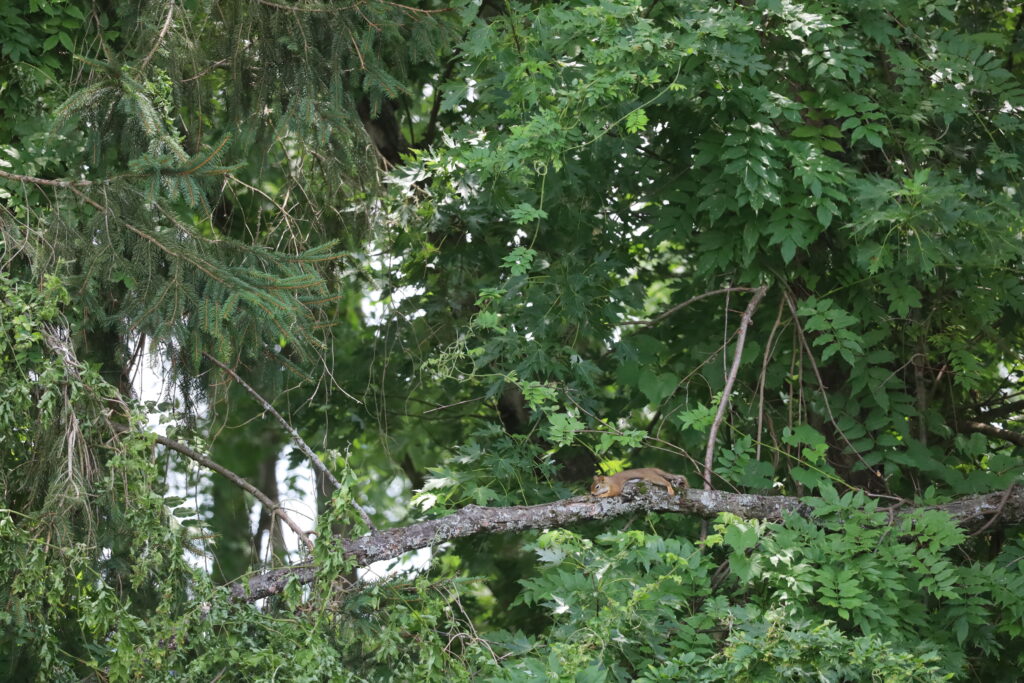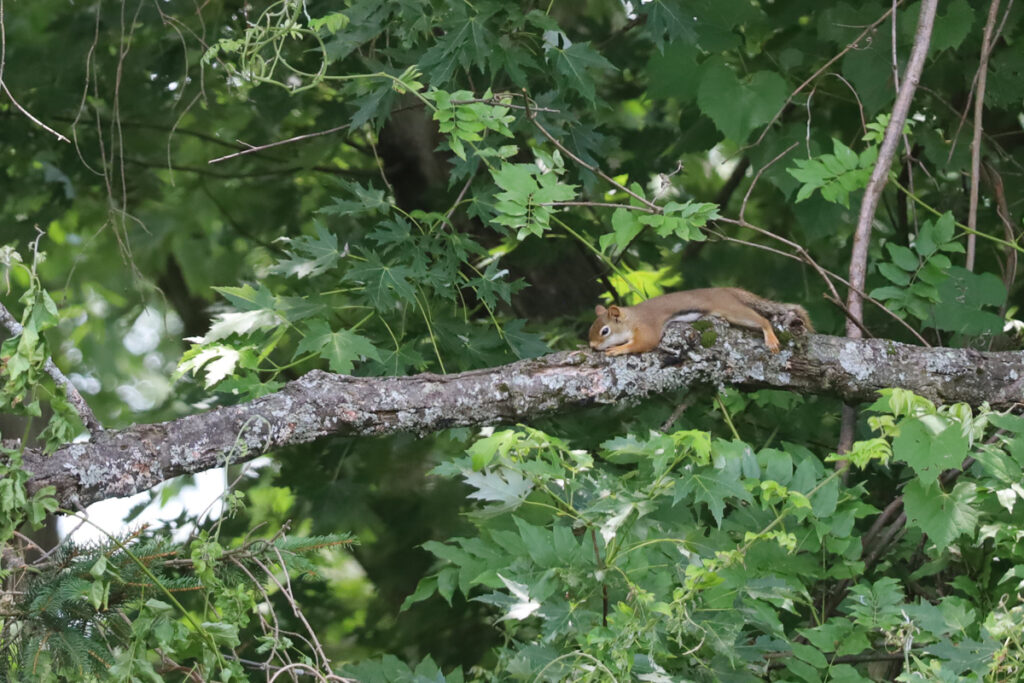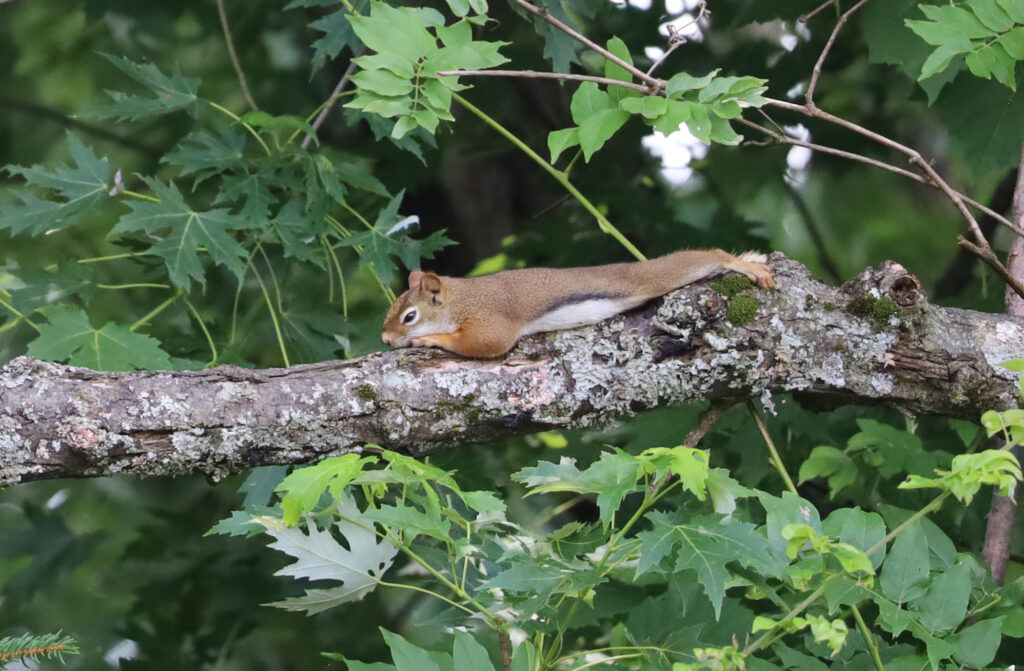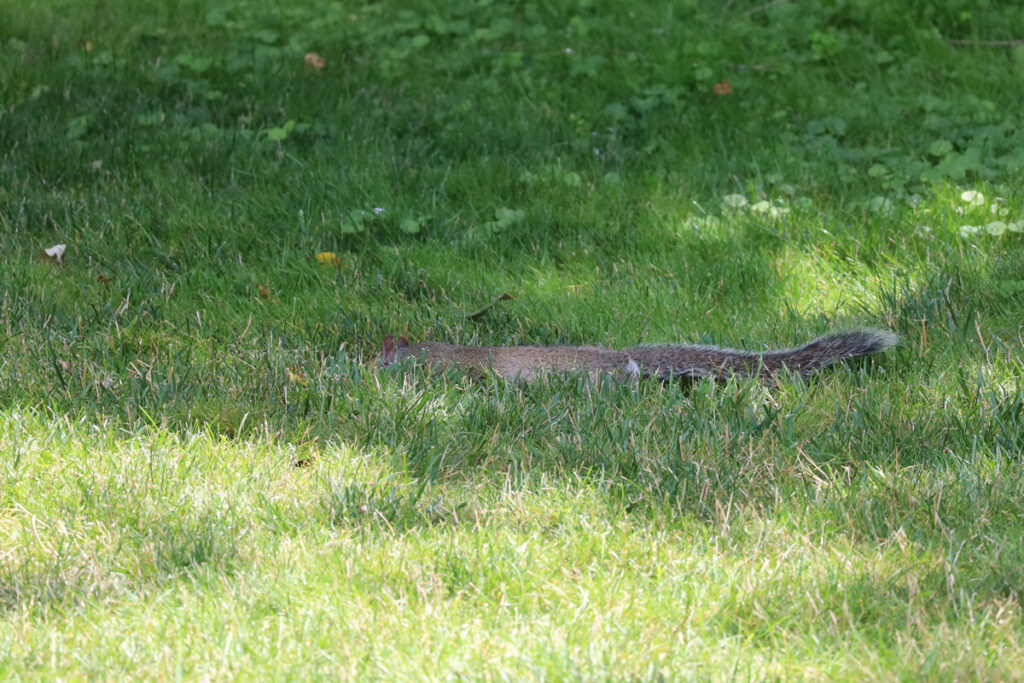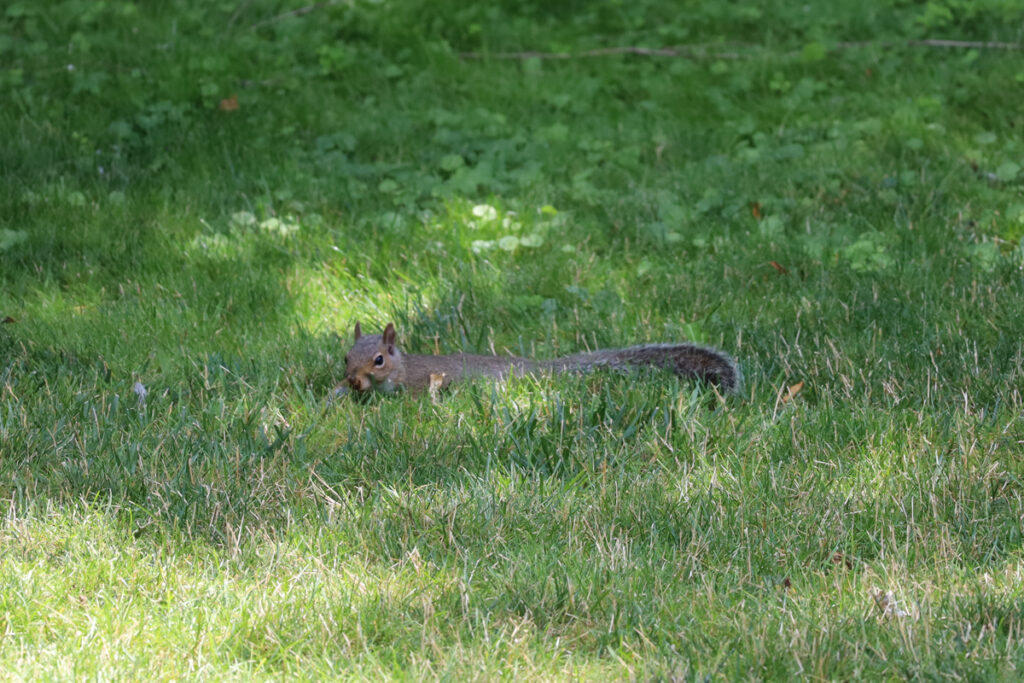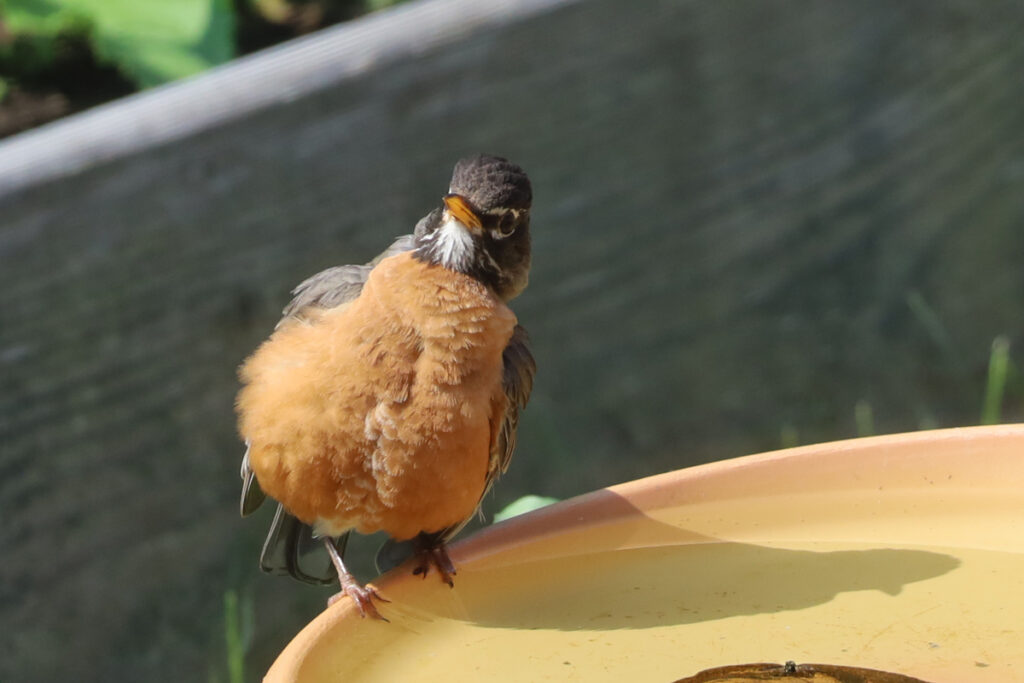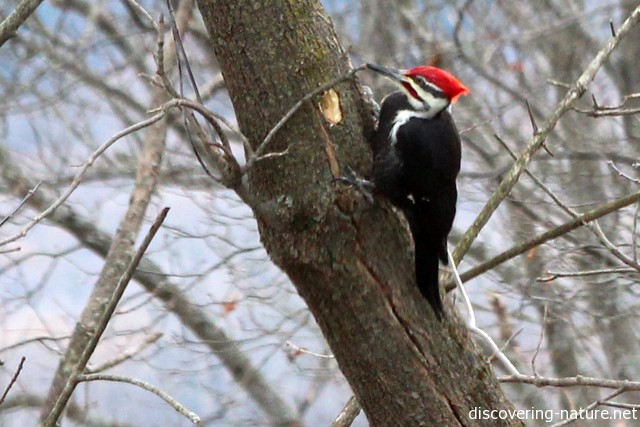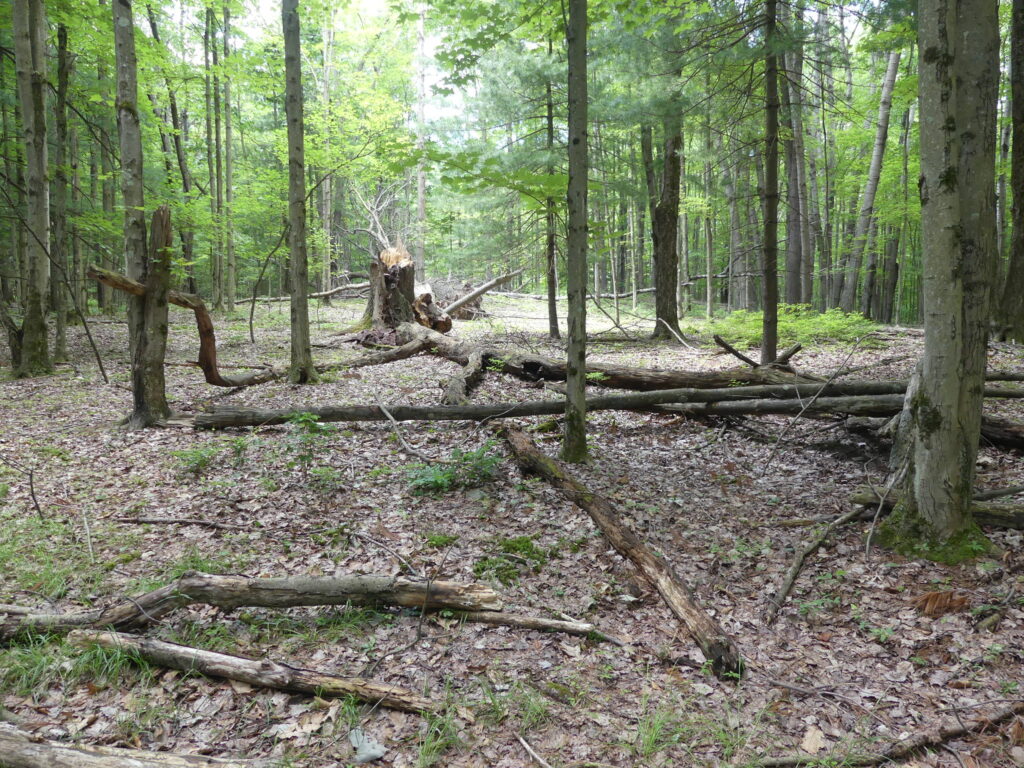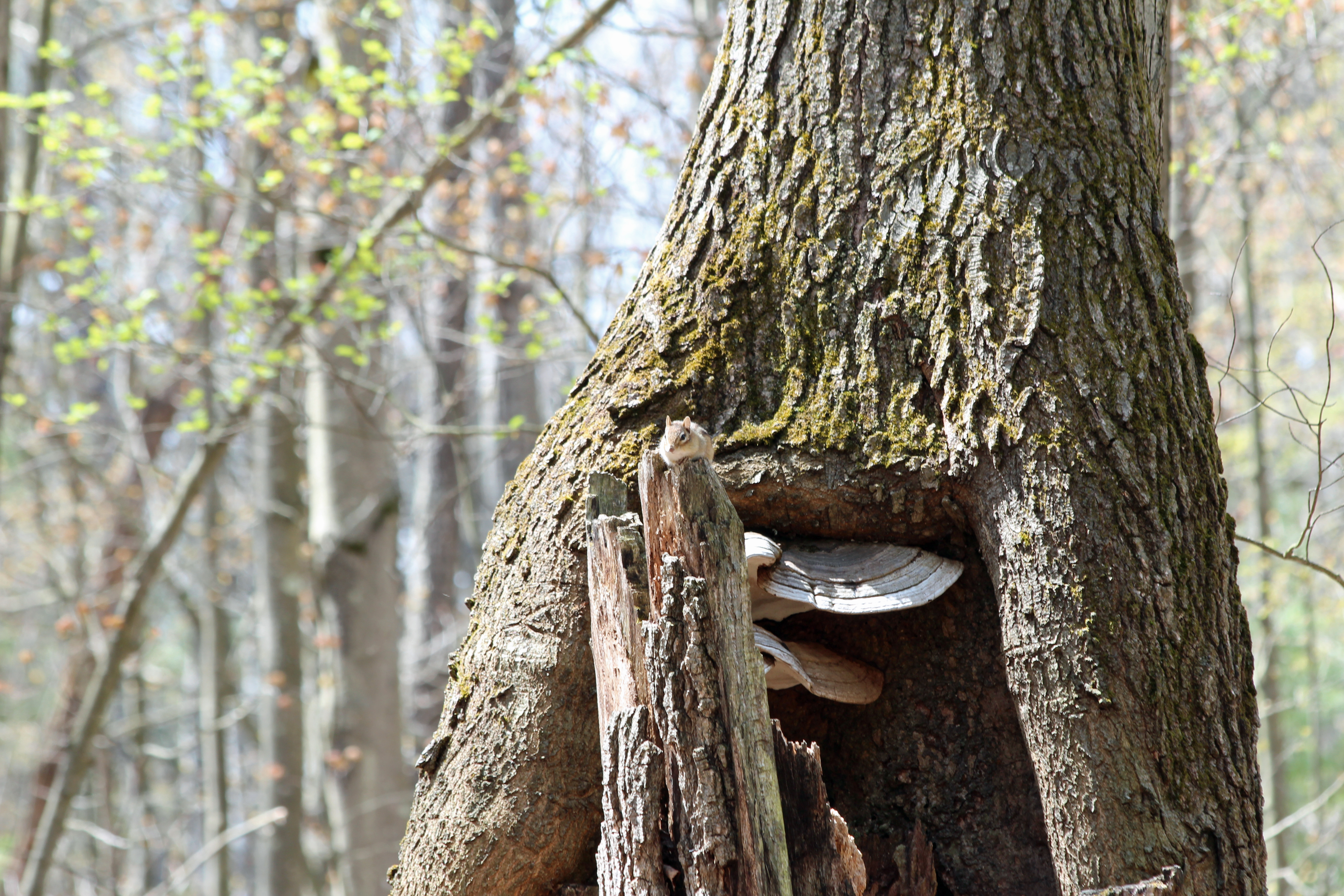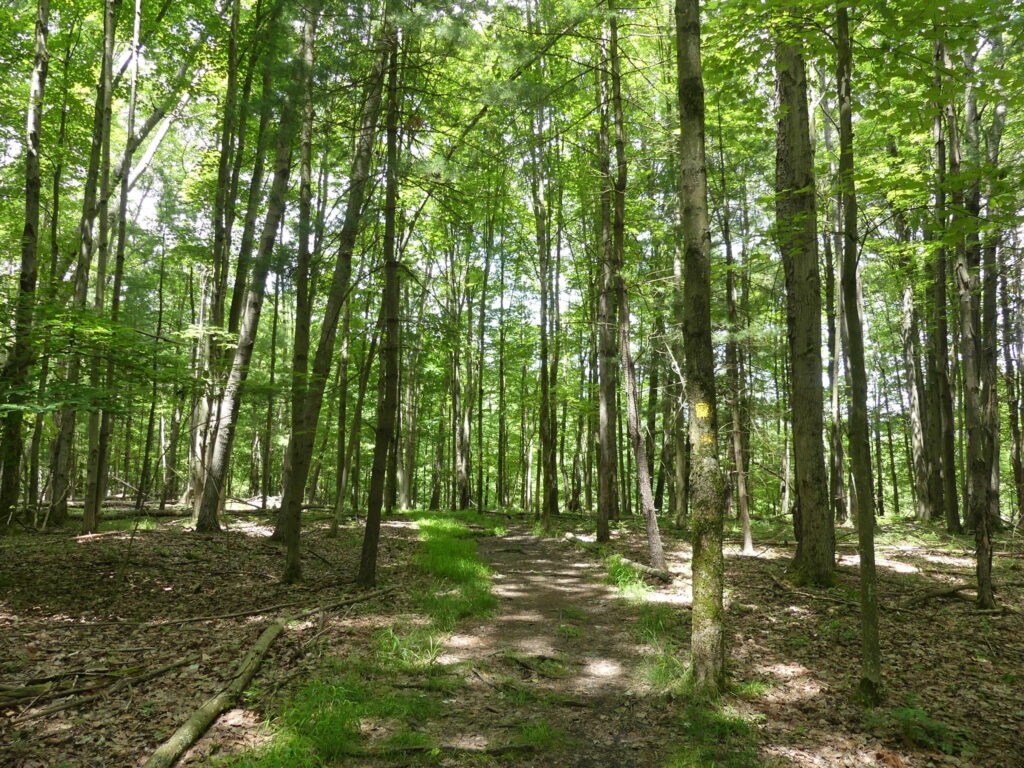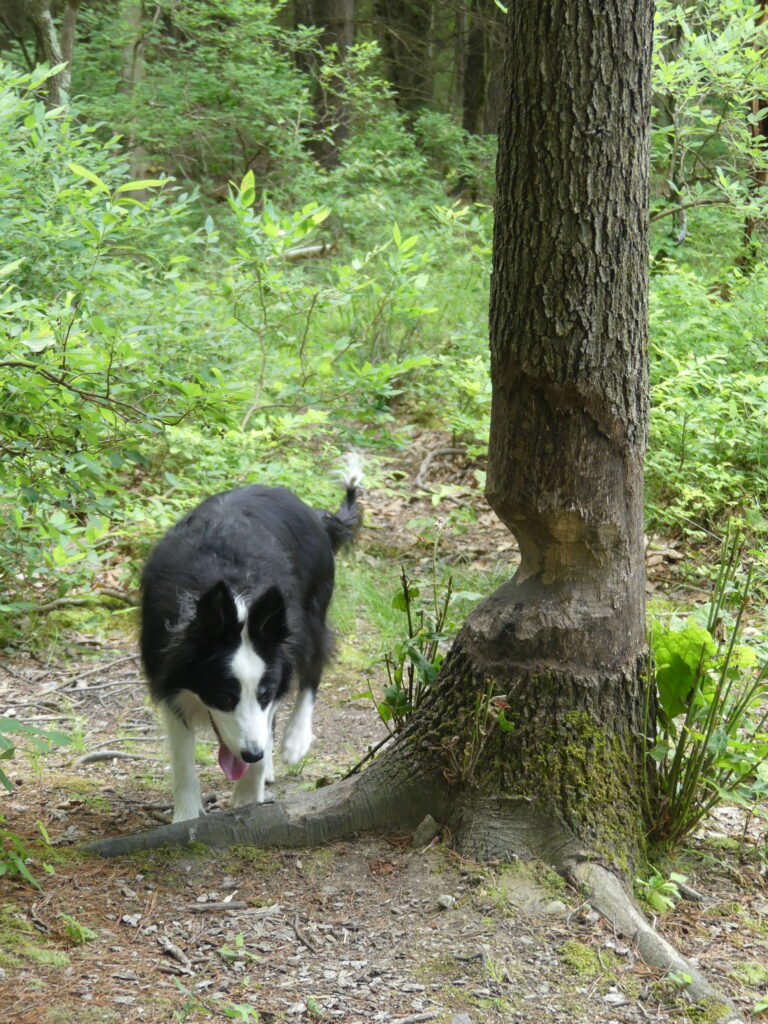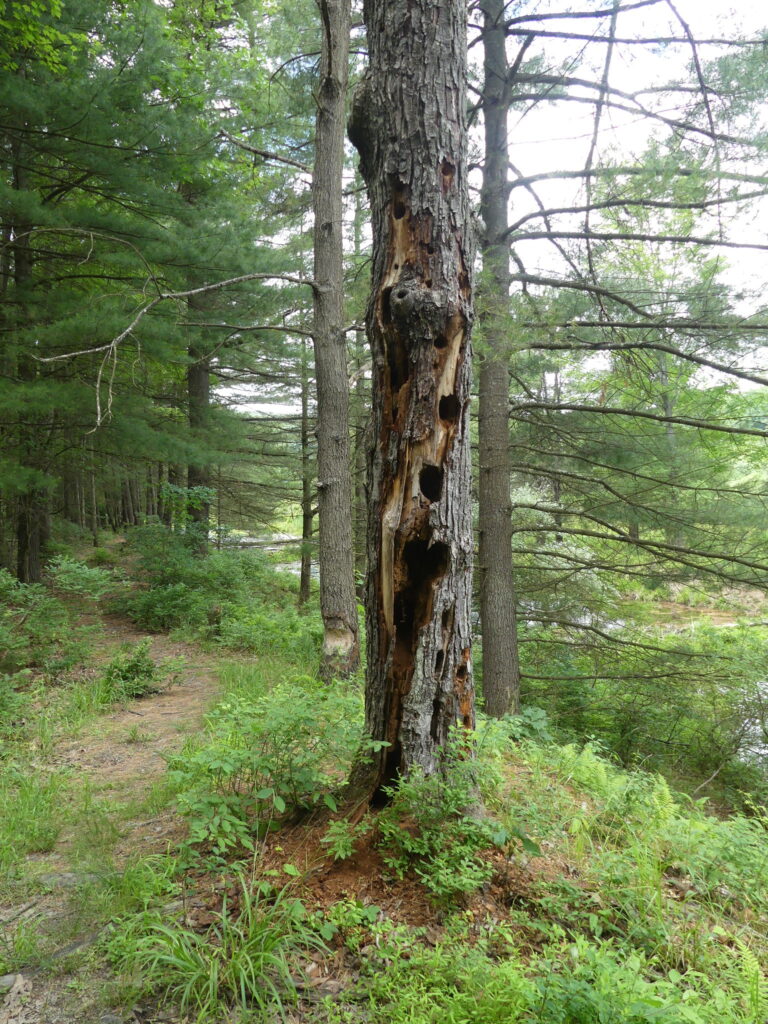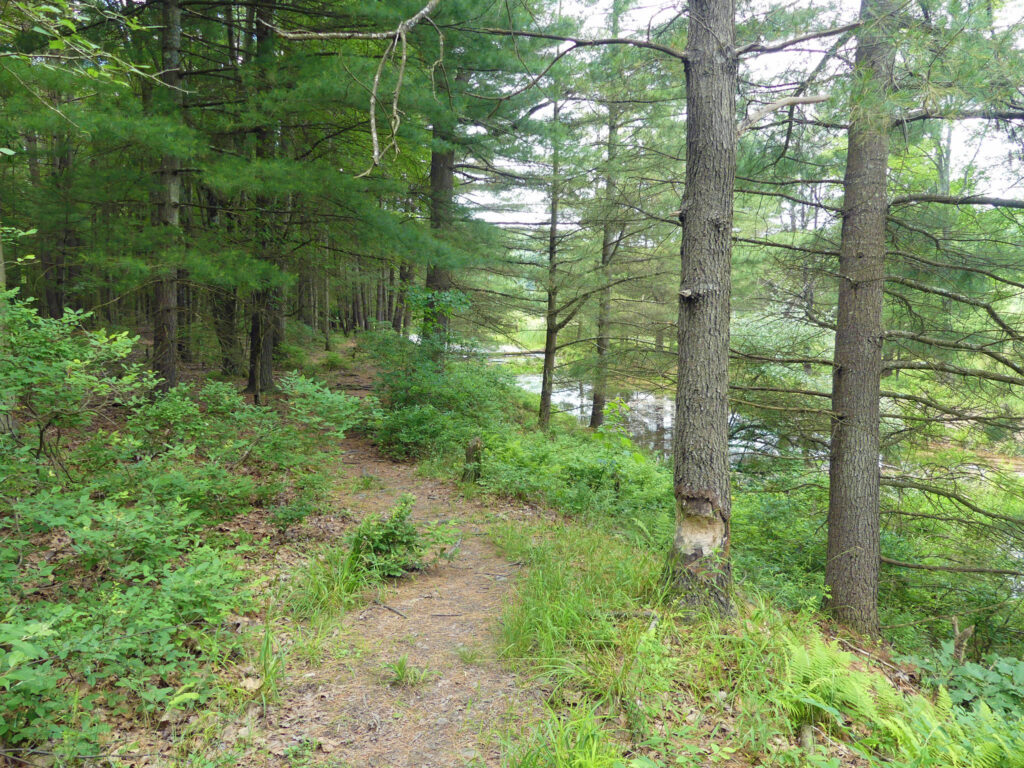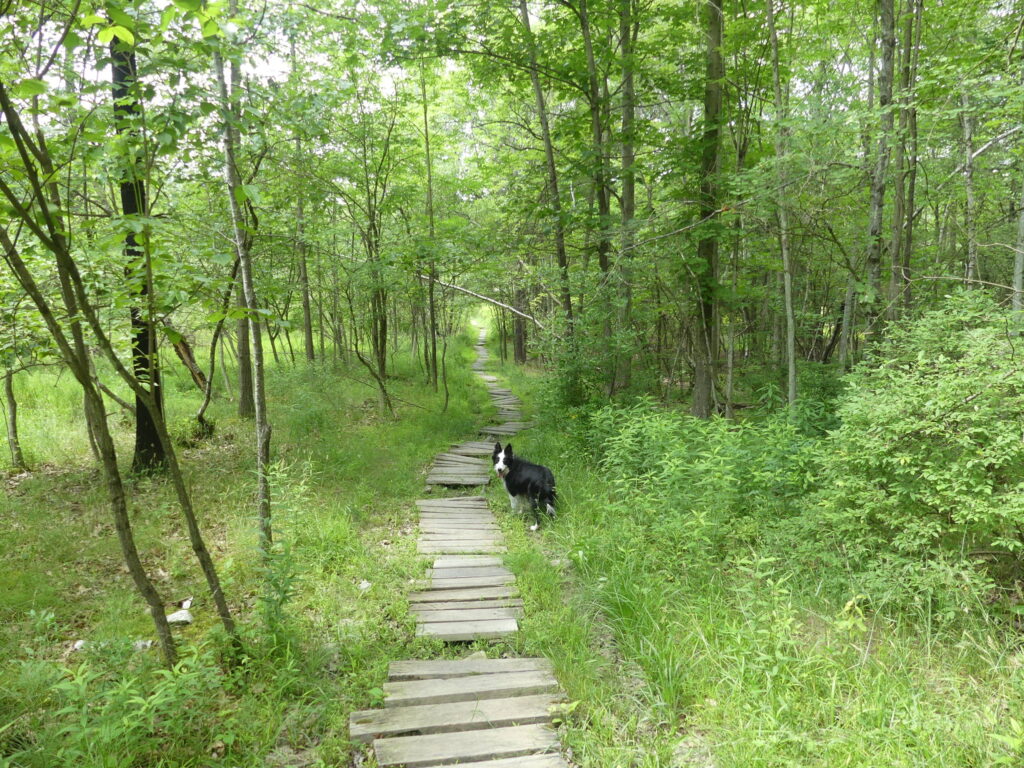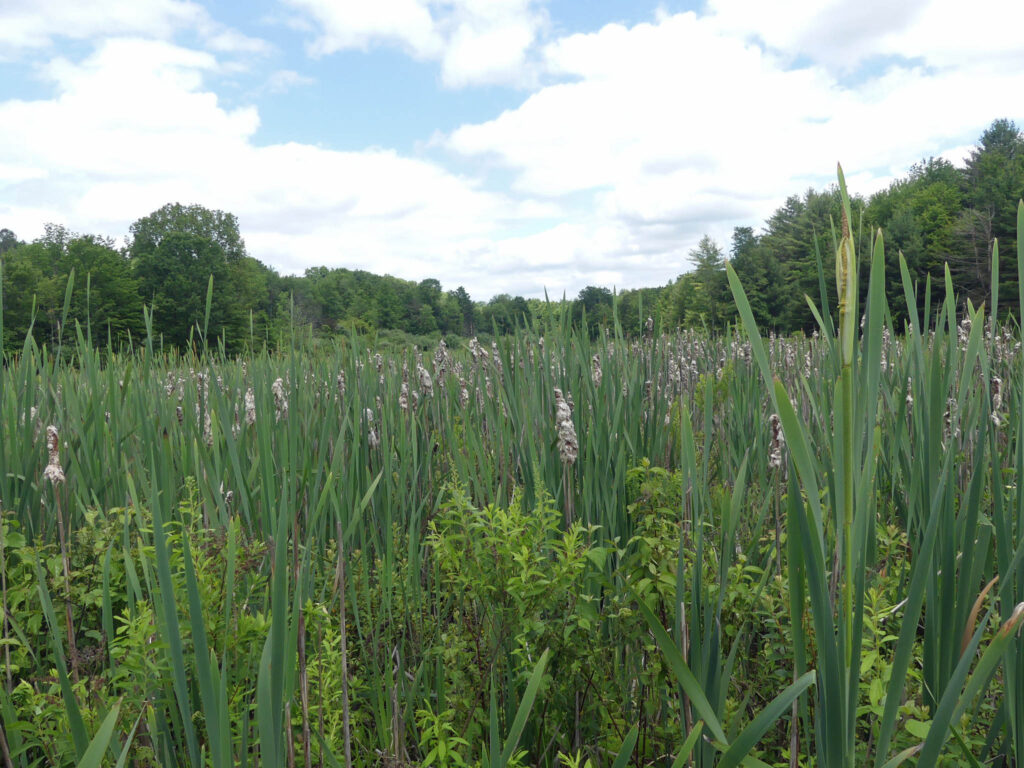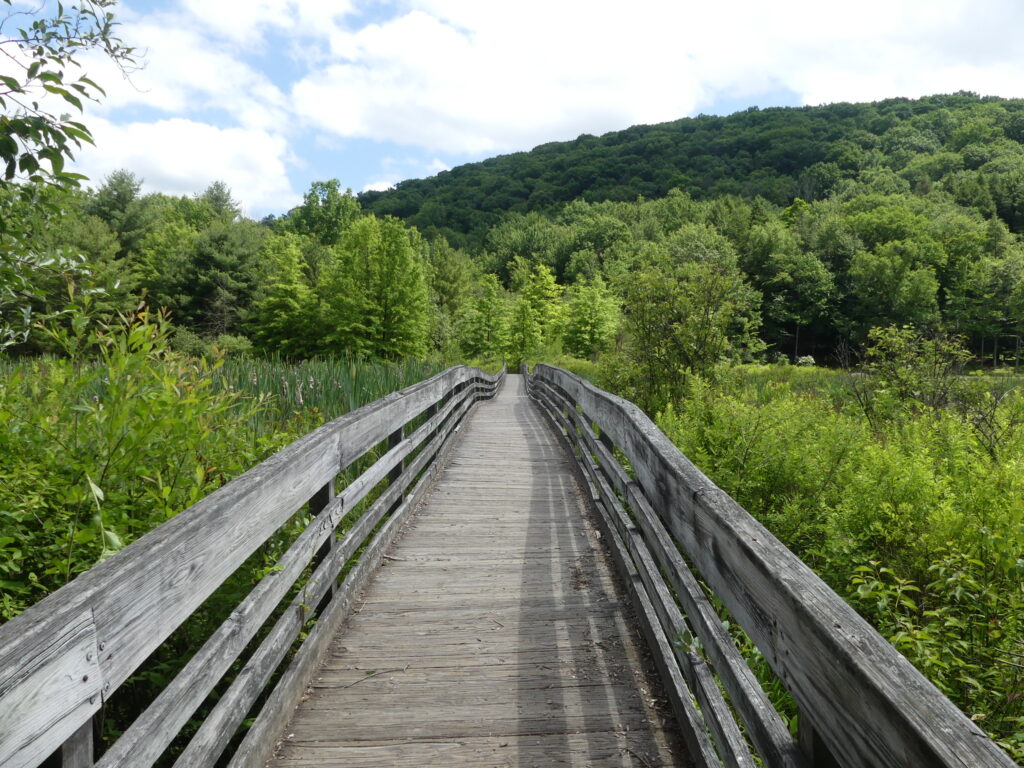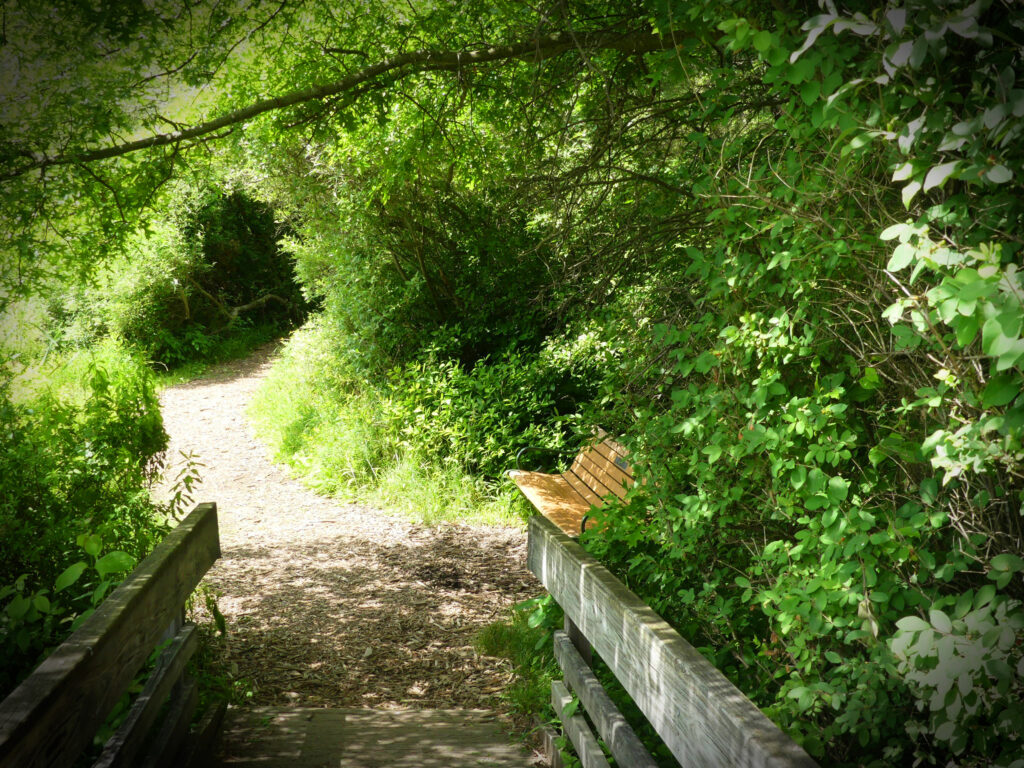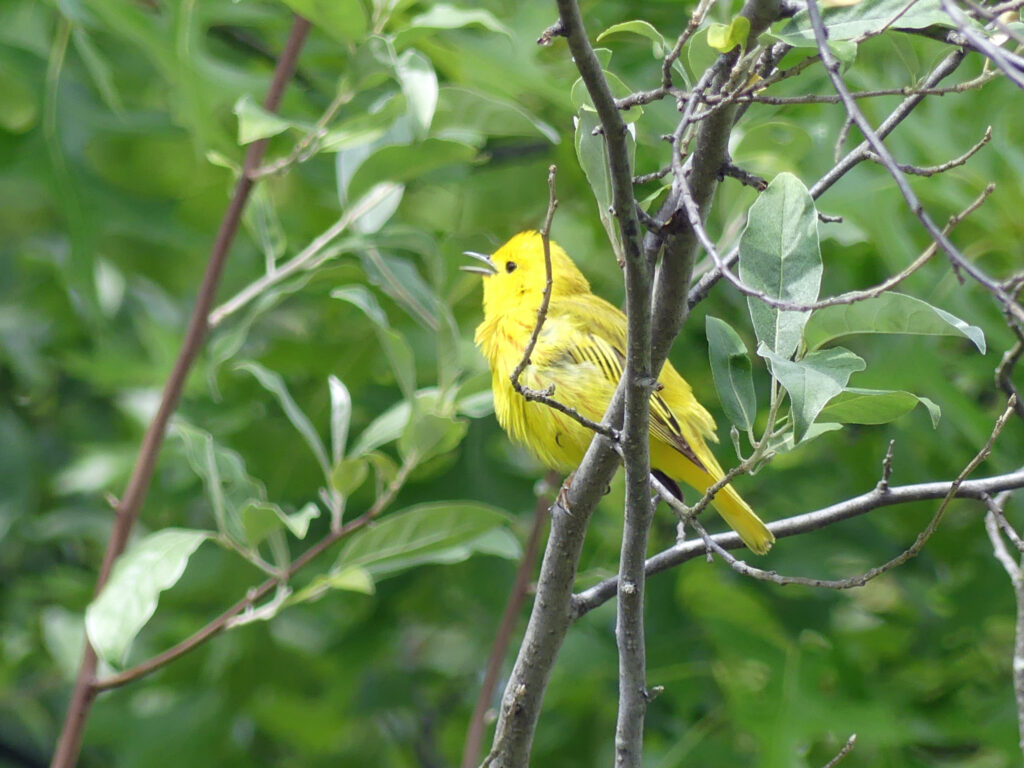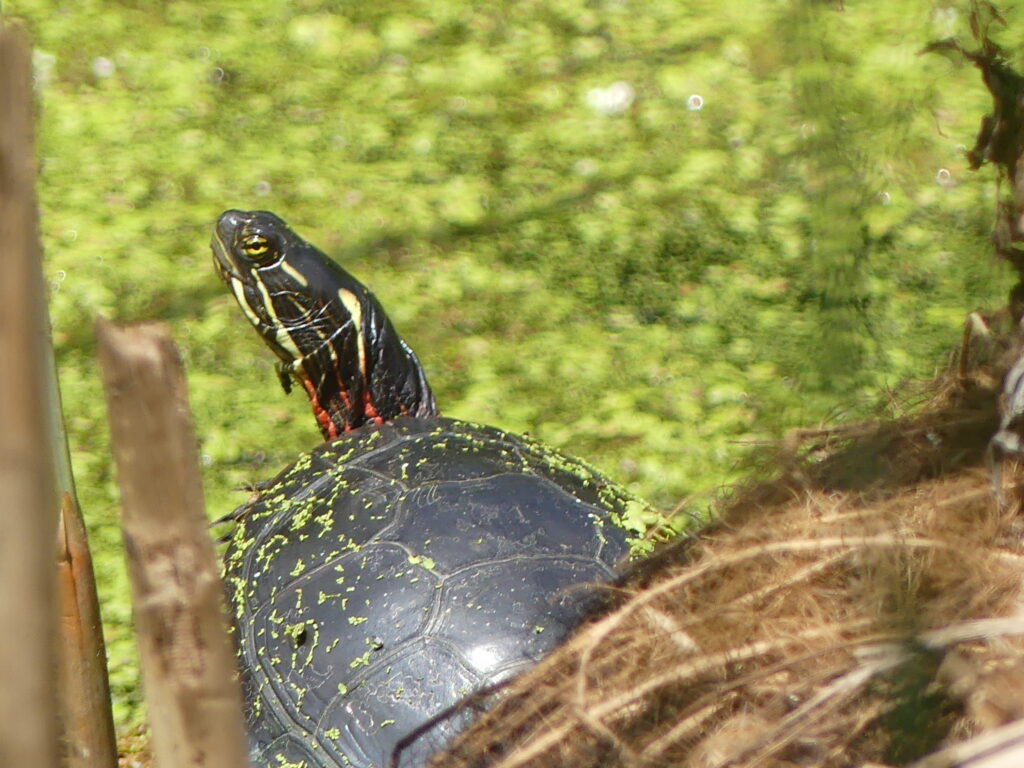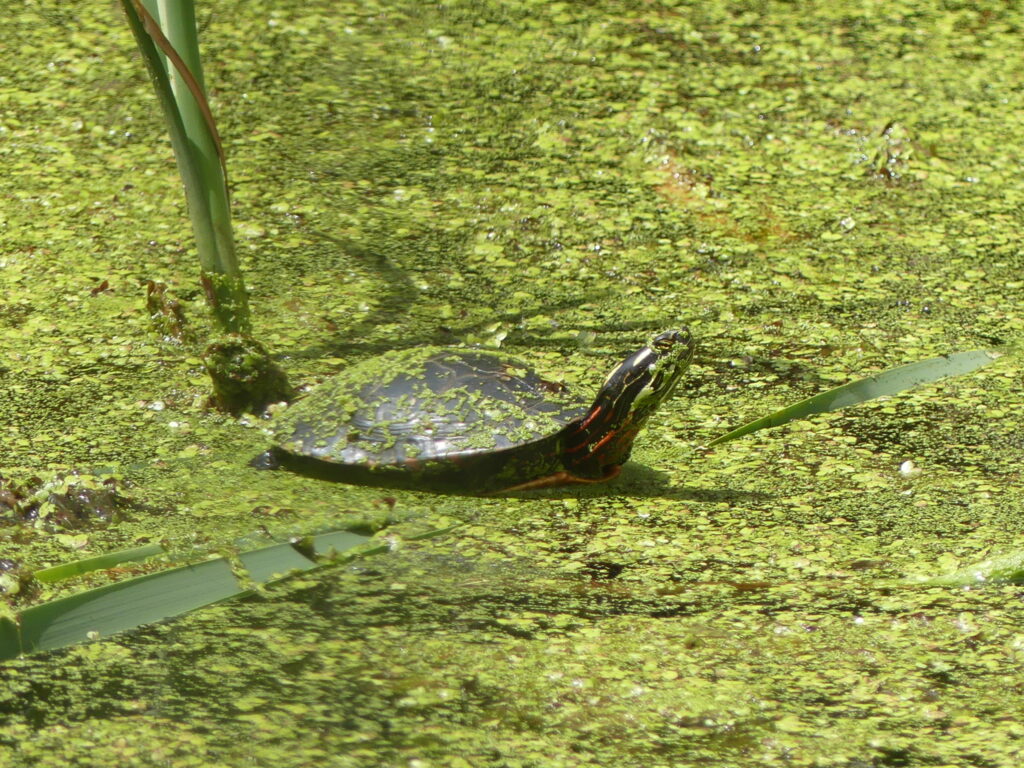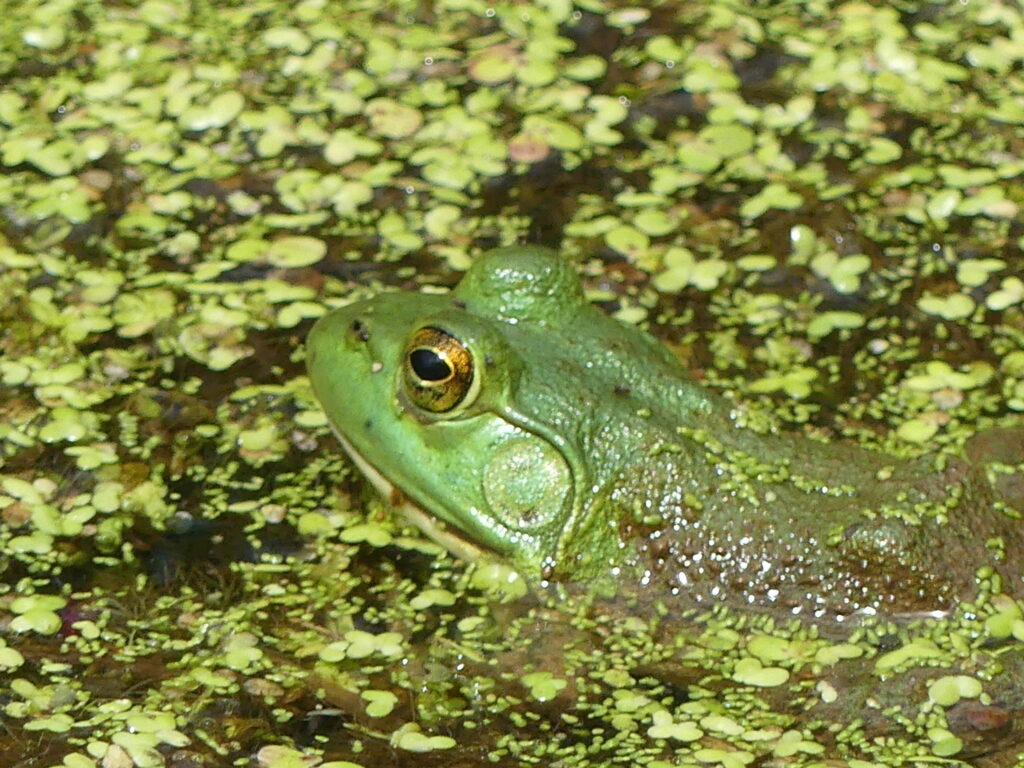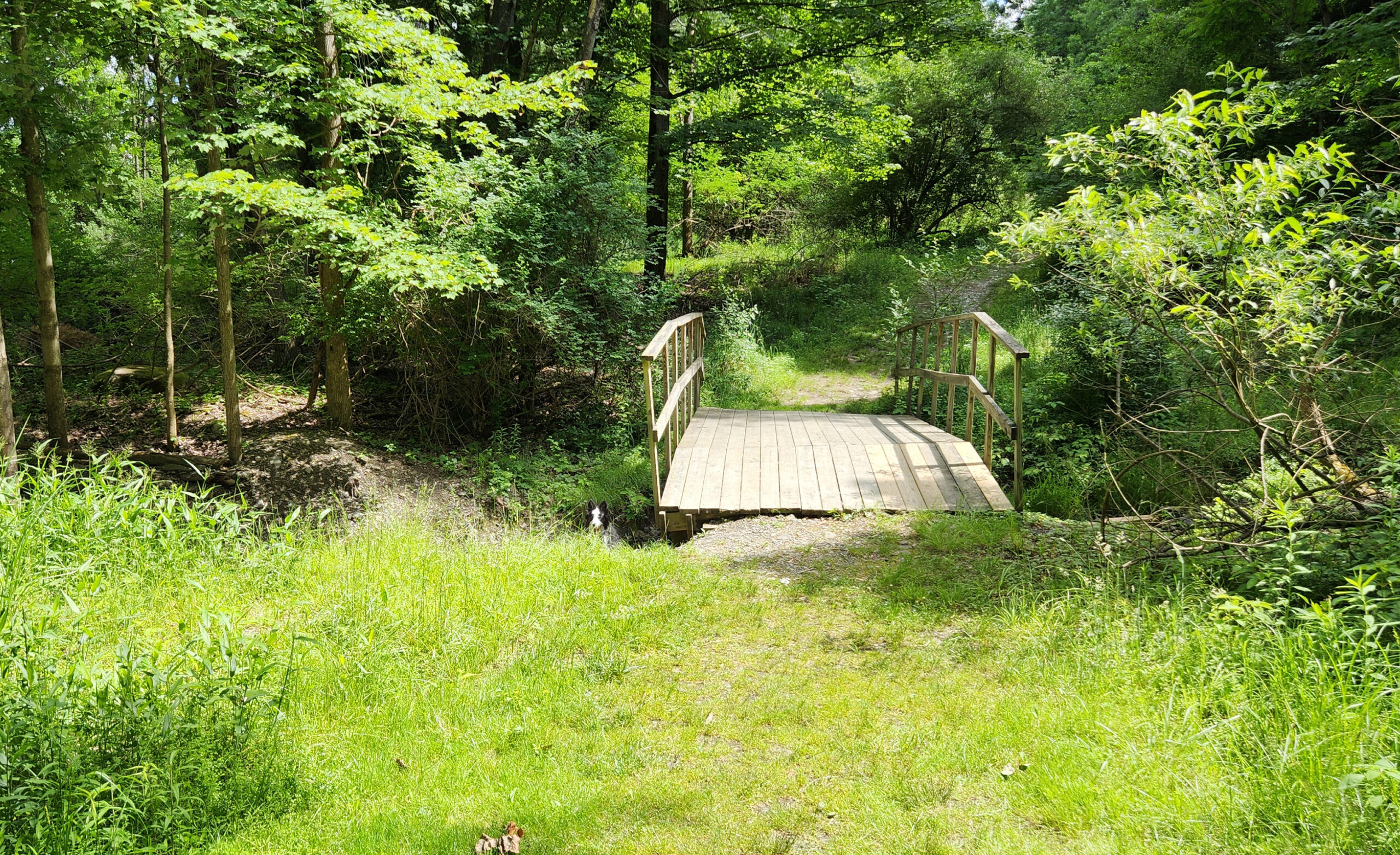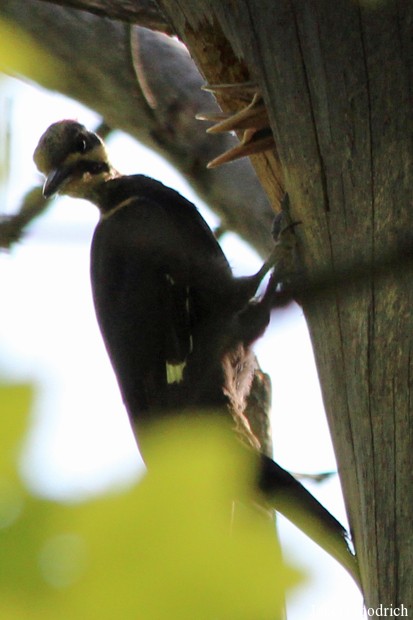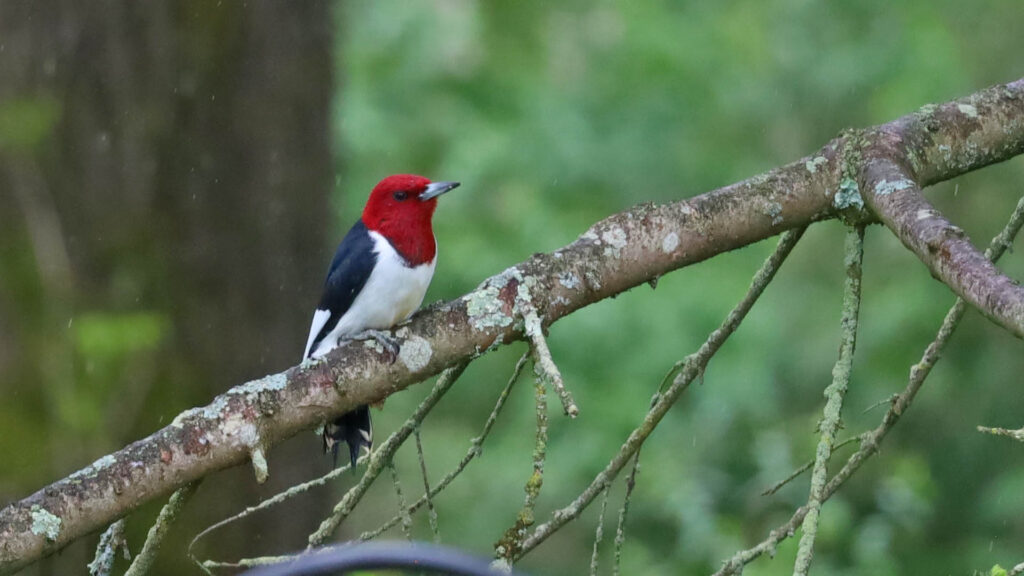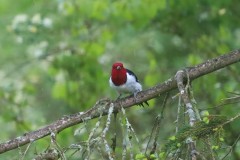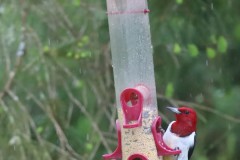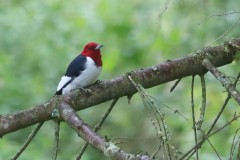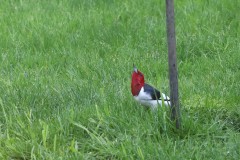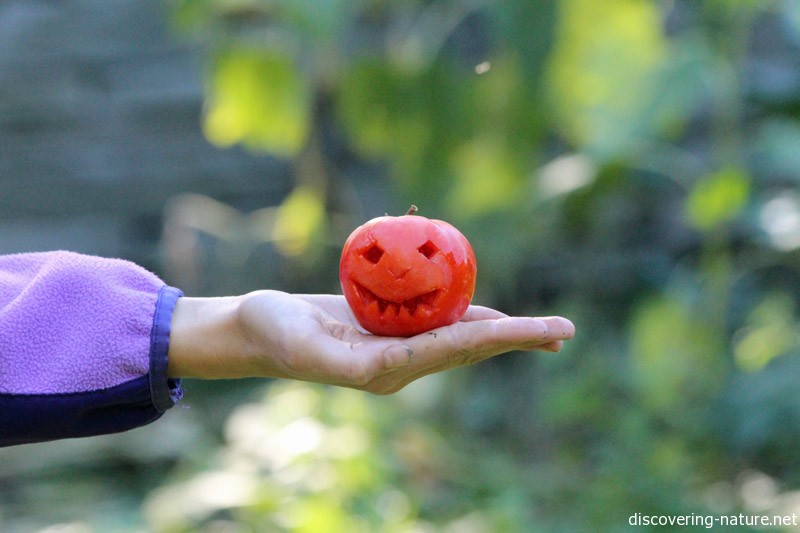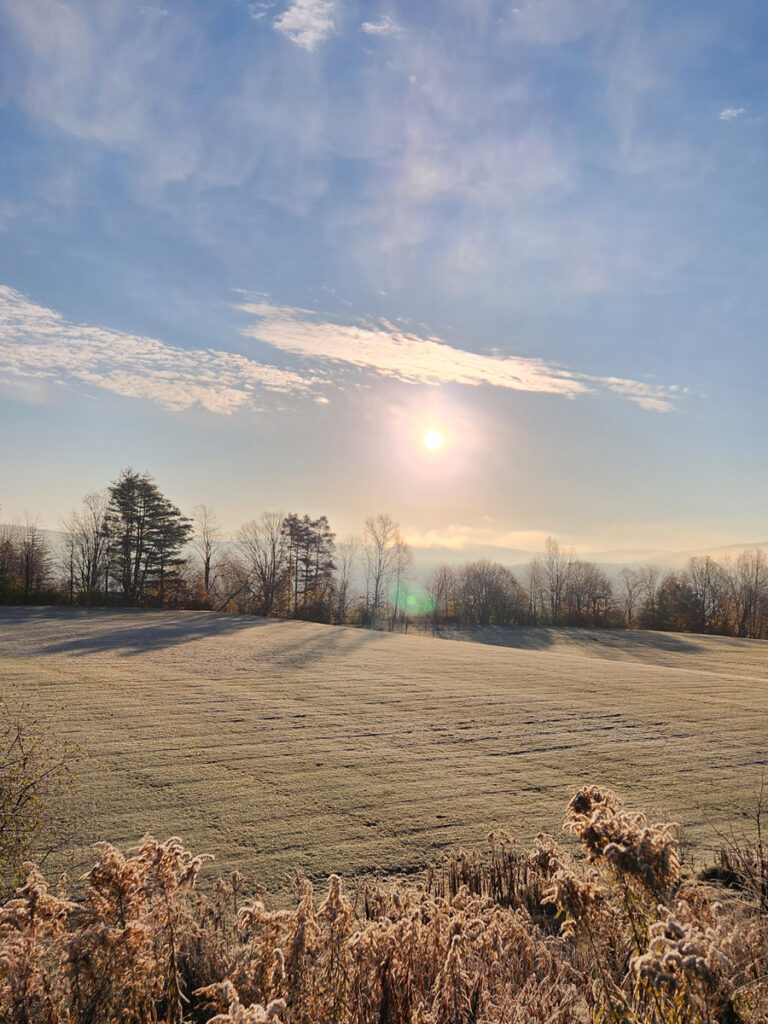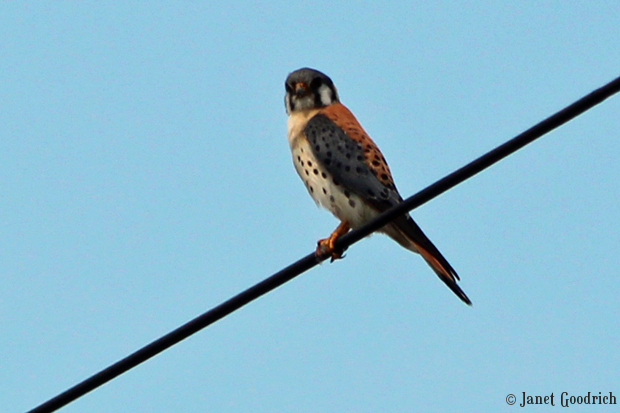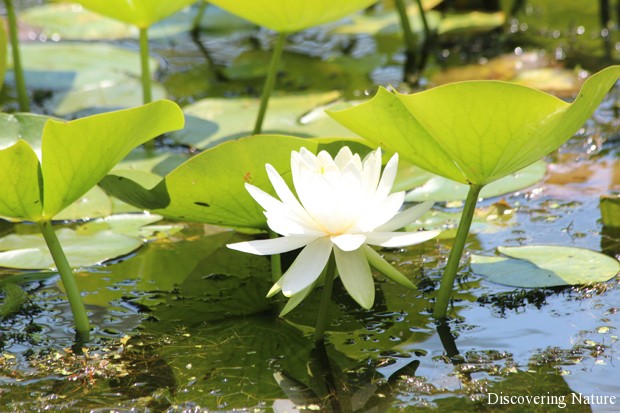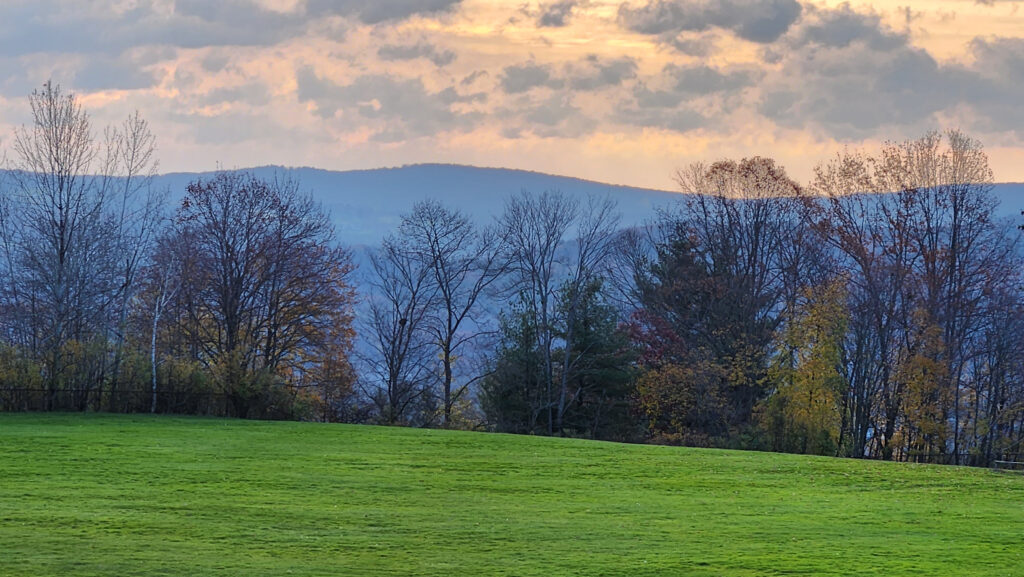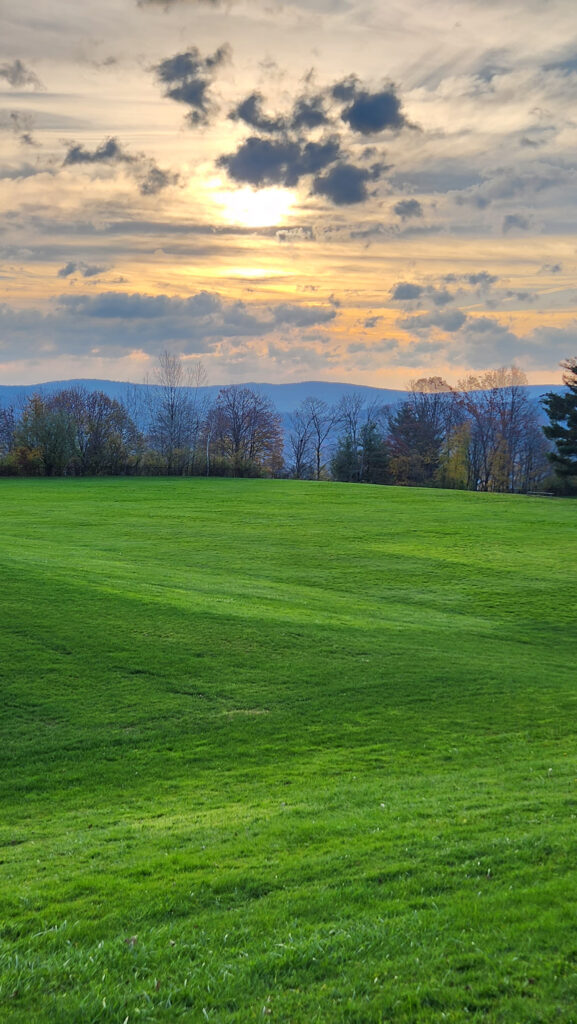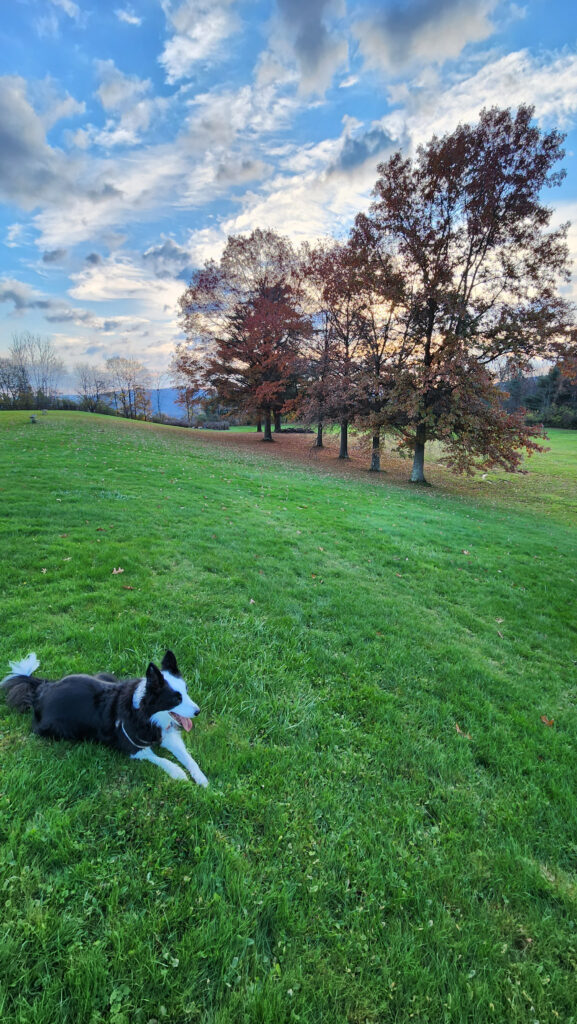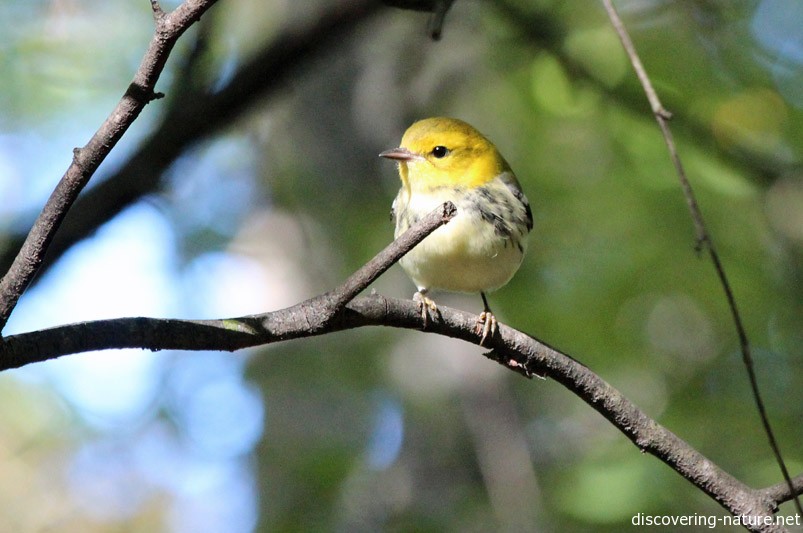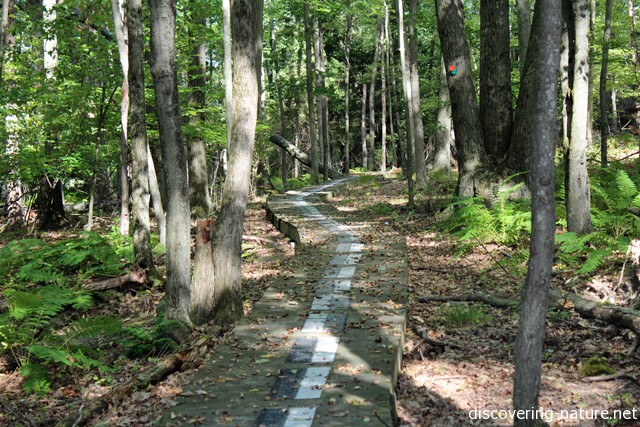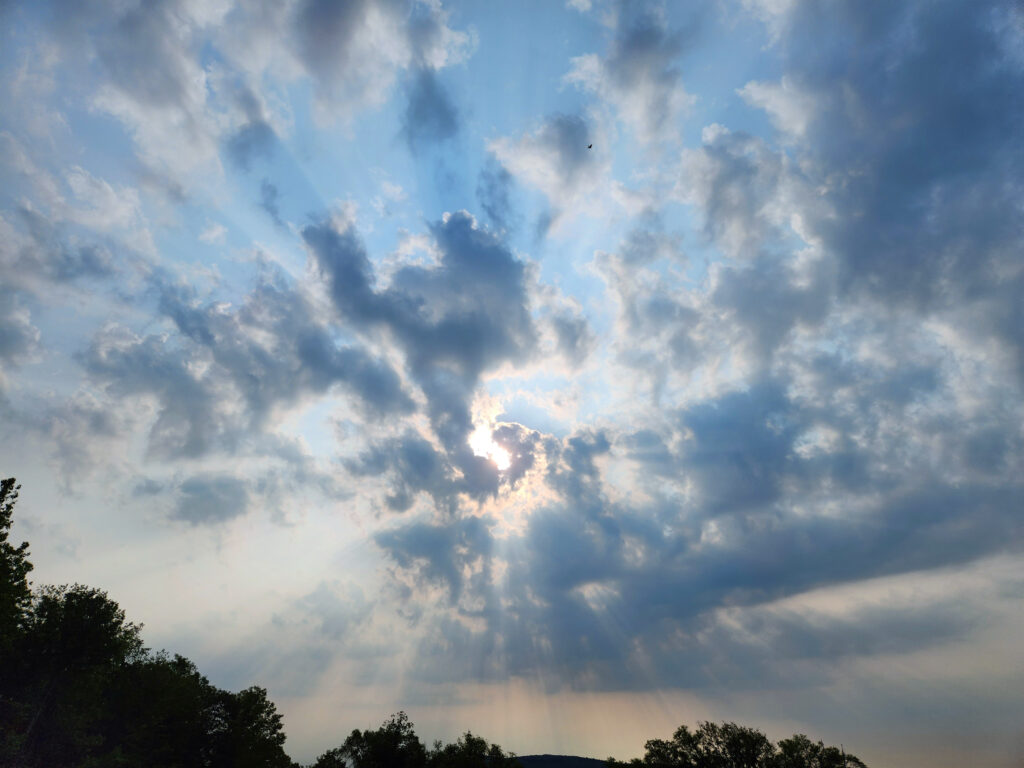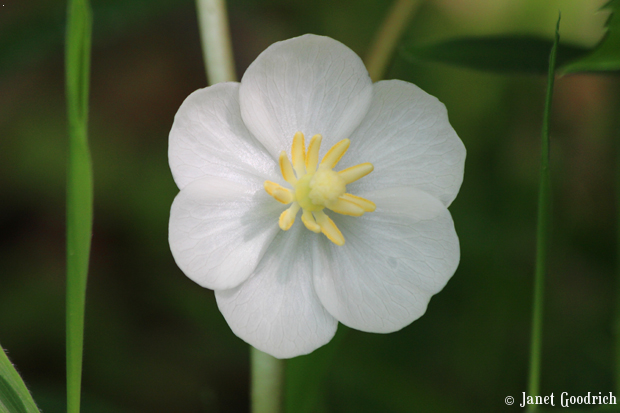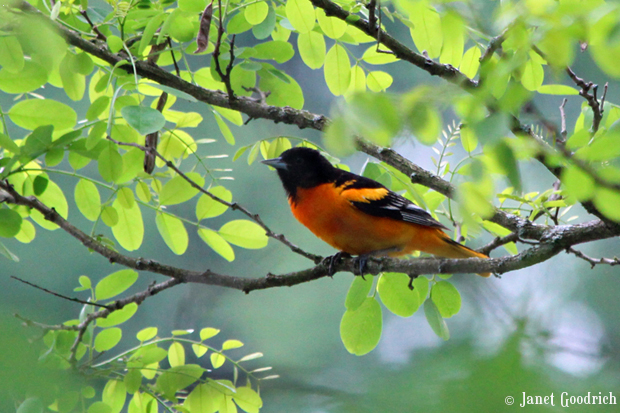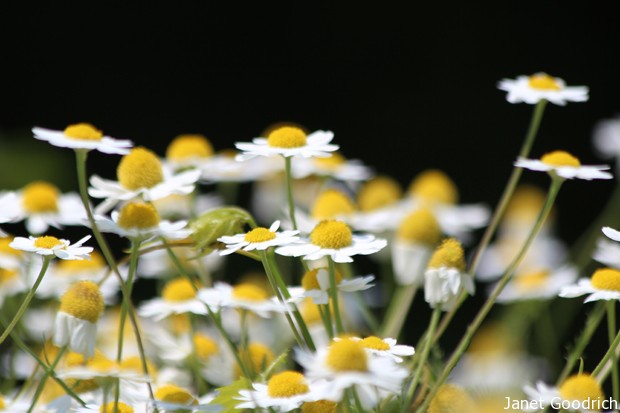-
Field Notes: Tiger Swallowtail
Comstock’s memory of a black swallowtail’s hatching affirms that watching a caterpillar’s transformation into a butterfly can be one of the most captivating and memorable experiences a child has.
What struck me first about the tiger swallowtail I watched in the garden was its fearlessness. It was no more concerned to be fluttering around a giant than if I were another flower. My phone was sufficient to capture some pictures.
The second thing I noticed was its broken tail. It’s very unusual to find a perfect butterfly! They seem fragile, yet sometimes they can sustain much more damage than this one had and still last. I wonder how the broken tail happened.
The Handbook of Nature Study didn’t have a section devoted to the tiger swallowtail, but it did have a photo of one in the section on the black swallowtail. Comstock is a wonderfully descriptive writer, and it was fun to read her account of two caterpillars meeting on a caraway stem. Each of them
drew back the head and butted each other like billy goats, whack! whack! Then both turned laboriously around and hurried off in a panic.
But I had to go to this butterfly identification site to learn that
- Female swallowtails lay their green eggs on plants in Magnolia and rose families;
- Males can be seen sometimes “puddling” — drinking from puddles together in damp places, and ingesting sodium ions that help them live longer;
- While the young caterpillars resemble brown and white bird droppings, older ones are a magnificent green with false eyespots that give them a protective resemblance to a snake head; and
- When poked, they project a pair of bright orange glands and secrete a stinky substance that can be wiped on the offending animal
All of that is pretty amazing! Caterpillars and butterflies are some of the best subjects for triggering children’s interest and sense of investment in the natural world because they’re easily seen and approachable. I’ve been an admirer and protector of monarch butterflies since we watched a caterpillar undergo its metamorphosis in kindergarten, but clearly there are other species worth being on the lookout for!
Have you seen or learned about something outdoors this week? Feel free to share it in the comments!
-
Field Notes: Cooper’s Hawk
According to Anna Botsford Comstock, “It is the teacher’s duty and privilege to try to revolutionize some popular misconceptions about. . . hawks.” They are, she argues, “most unjustly treated, largely because most farmers consider that a ‘hawk is a hawk,’ and should always be shot to save the poultry, although there is as much difference in the habits of hawks as there is in those of men” (104).
She’s writing in defense of the Red-tailed and Red-shouldered hawks. Unfortunately for the Cooper’s hawk, she considers it “to be feared” because it is “very destructive to poultry.”
Admittedly this hawk is intimidating to look at. Its red eyes, lowered brow and habit of hunting other birds athletically through even dense foliage make it a cause for dread among songbird lovers. Mature hawks have blue-gray backs and long, striped tails. From our dining room window, we’ve seen a few birds expertly snatched in the Cooper’s hawk’s strong talons. Its habit is to squeeze its prey to death before consuming it, often mantling over it on the ground or in a tree to fend off other distressed birds. This post from a few years ago shows a Cooper’s hawk mantling — till another predator scares it away.
I don’t keep poultry, so I’ve never seen a Cooper attack a chicken. But I love the songbirds and hate to see it take one.
Comstock points out the distinctive flight of these hawks, noting that they “flap their wings for a time and then glide a distance. They do not soar on motionless outspread pinions by the hour” (105). All About Birds adds some fascinating facts, including the discovery that almost a quarter of the Cooper’s hawk skeletons in one study showed healed-over chest fractures. When we see the speed and agility of their flight, it’s not hard to understand how a collision with a tree might happen.
If a Cooper’s hawk targets birds at your feeders, you can take them down for a few days and it will move on. However, if you have a pair that have long regarded your neighborhood as their territory for nesting and hunting, that solution doesn’t work too well. You can remove the feeder permanently if you don’t want to aid and abet the Cooper. But if this predator is only an occasional visitor, you can consider whether it does more good to the birds to leave the feeder up or take it down.
What have you been seeing in your yard or nature walks this week?
-
Nature Study as a Discipline
This is a shot of my two daughters. We were on a nature walk. But since both were in college, I didn’t think of what we were doing as “nature study.” Nature study, I thought, was a homeschool subject.
Yet what else would you call it? Both are clearly students of nature in the photo. Once you have the habit, it pretty much sticks with you.
Looking back, I’m reminded that we’ve been doing this a long time — setting out, looking around, and learning more about what we noticed when we get back home.
Much of the joy of nature study was doing it together, and sharing so many discoveries. I feel less confident about going into the woods alone these days. Still, I’d like to return to a more intentional approach to nature study. The world is going crazy, but that only makes it more worthwhile to look outward at the amazing order and complexity and beauty in the network of life all around us.
-
Greenwood Park
-
Playing It Cool on a Hot Day
While eating lunch today, I spotted a reddish lump in the leafy heights of the back yard. Sure enough, it was a red squirrel.
Eventually it adjusted for more comfortable power-lounging — or, to use the technical term, splooting:
I know just how he feels. What a perfect way to experience a hot day!
Meanwhile, in the grass, a gray squirrel we’ve dubbed Stefan Spendidtail was in full sploot as well:
I’m not sure what they call a robin that’s tipsy from the heat, but this one seemed to be savoring the mere idea of the bird bath. It perched with this quizzical expression for several minutes before taking the plunge.
-
Summer sights and sounds
This spot near one of the many beaver dams in a favorite preserve gives an impression of quiet peace, though it’s actually full of sound… so much that it’s hard to separate out the threads of the aural tapestry. I hear a red-eyed vireo, a song sparrow, robins and blue jays at different points, along with other sounds, including the quiet, panting excitement of my rambling companion Lucy as she continually spins and sniffs at — who knows what?
One of the things about revisiting familiar places is the reminder that nothing lasts forever. For example:
This spot is where we’ve often seen a chipmunk we dubbed “Carson,” because he reminds us of the butler on Downton Abbey who imagines himself “staying at Downton forever, and then haunting it forever after.” He was always perched there, watching us from his huge estate. But as a result of a complex disaster of wind taking down a tree that took down others as it fell, Downton is no more, and Carson is not in his usual perch as he used to be:
Still, the first stretch of open woods was lovely with the sun showcasing the many shades of green and dappling the ground.
Stopping to check out the vernal pool that’s usually filled to bursting with salamanders and frog’s eggs in the spring, I found it filled with grasses along with this fallen tree that reminded me of one of my favorite books: Elizabeth Goudge’s Scent of Water, with its epigraph from the book of Job:
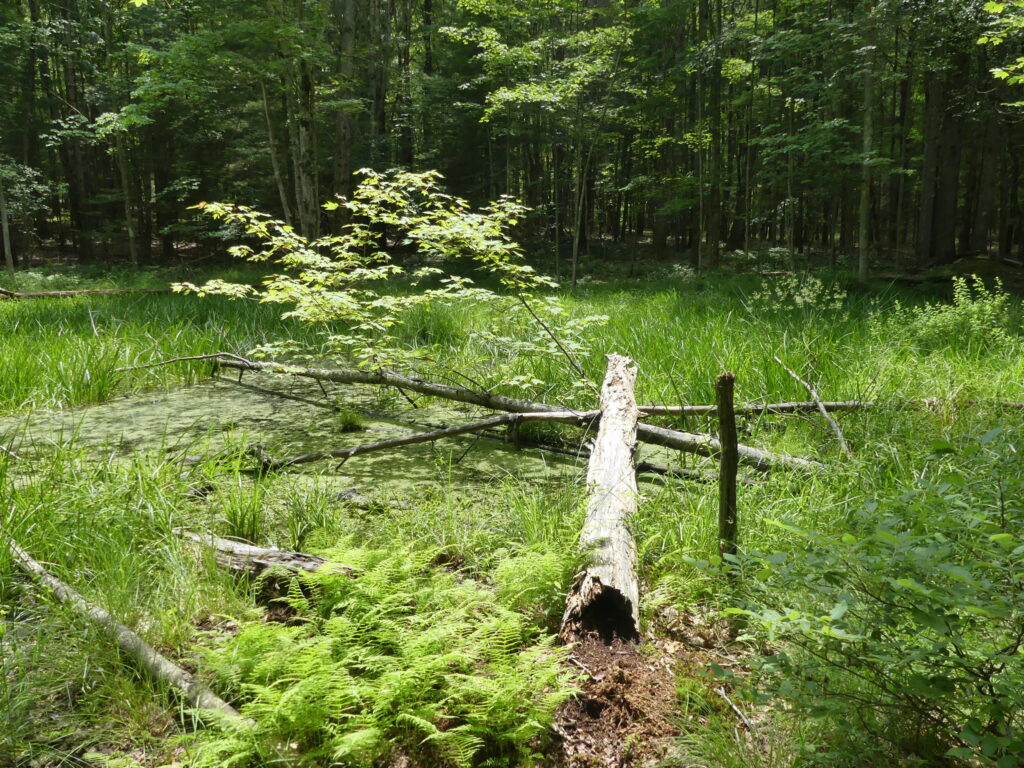
“For there is hope of a tree, if it be cut down, that it will sprout again, and that the tender branch thereof will not cease. Though the root thereof wax old in the earth, and the stock thereof die in the ground; yet through the scent of water it will bud, and bring forth boughs like a plant.” (Job 14: 7-9) On to the stretch of beaver dams, dotted with beaver activity…
woodpecker activity…
and general loveliness of the “leaping greenly spirits of trees / and a blue true dream of sky” variety.
This little nook at the end of the boardwalk always seems enchanted to me. I have a pic of my youngest sitting on it years ago here, working on a scavenger hunt. (How can it be 12 years have passed?) I couldn’t resist enhancing the photo to make it more like my sense of the place:
It was especially enhanced by the sight of a common yellowthroat that I’d heard singing over my head last time I was here, but I never got my eye on him. This time I did — as he fled the scene at the arrival of this yellow warbler, who took over the airwaves with his “sweet sweet I’m so sweet” song:
From there it was back along another beaver-engineered canal full of turtles and frogs. Only a few allowed themselves to be photographed.
Last stop: a quick wetting for Lucy in the creek — moving water not populated by other creatures — on the way back to the car.
-
Red-Headed Woodpecker
Never in my life have I seen a red-headed woodpecker — till one day recently when this one showed up at our bird feeder and spent a day or two in the brush beyond our back yard. It was taking seeds and storing the in the bark of trees, so we hoped it might find this a hospitable place to stay for the summer. But it apparently moved on.
My father has spoken before of seeing one when he was 6-years old. It raised young in a dead tree in front of his house. The city cut down the tree the following year, and there were no more woodpeckers.
All About Birds lists them as in steep decline. I guess they are more common farther to the south, but I suspect this is a once-in-a-lifetime sighting. I felt very blessed.
-
One last morning view
-
Morning Glory II
-
Morning Glory
